|
Whether celebrating Easter, Passover, or a “just because” moment, I have a few wines and recipes to grace your table and please your palate. Easter Jean-Luc Colombo Cornas “Terres Brûlées” 2018 Jean-Luc Colombo winery is located in the northern appellation of Cornas in the Rhône Valley, France. Cornas is the smallest appellation in the Rhône Valley, consisting of approximately 325 acres, and is dedicated to producing only red wine from the Syrah grape. The Mediterranean climate and decomposed granite soils contribute to the richness and character of these wines. Terres Brûlées means “burnt earth,” which refers to the long hot days balanced by the cool nights. Grapes for this 100% Syrah are hand-harvested from 30+ -year-old vines. The wine is aged 21 months in oak barrels (10% new, 90% one-to-five-year old barrels). Nose: Dark cherry, dark berries, plum, and baking spice. Palate: Rich with blackberry, plum, and black cherry, reminiscent of exotic jam. Notes of vanilla, cocoa, spice and a trace of minerality linger on a long finish. An exceptional wine! Alcohol: 14.5% SRP: $63.99 Pairings: Roasted white meat, game, lamb, seared tuna, and hearty stews. I was seven years old the first time I tasted lamb and after that I insisted that my mother make lamb chops for me at least once a week. Seven years later, our family was invited to a traditional Greek Easter meal where I feasted on leg of lamb for the first time. I was hooked! Roasted Leg Of Lamb With Vegetables (serves 8 to 10) The beauty of this recipe is that you can add any vegetables you like to the pan. My favorites are small potatoes, baby carrots, and onions. Ingredients: One 5 to 6 pound trimmed bone-in leg of lamb 4 to 5 garlic cloves minced One tablespoon of olive oil Chopped fresh parsley, thyme, rosemary (a tablespoon of each) One tablespoon of Dijon mustard Kosher salt and pepper to taste. Cut up veggies such as new potatoes, carrots, zucchini, and onions. Directions: Line a large roasting pan with aluminum foil and preheat the oven to 350℉. Pat lamb dry and using a sharp knife, score the top side of the lamb, making shallow cuts all over. Combine the rest of the ingredients in a small bowl. Place lamb fat side up on a rack in the prepared roasting pan. Spread the garlic mixture evenly over the lamb, making sure to rub it into the scored cuts. (I like to use my hands to rub the mixture into the lamb.) Add a small amount of dry white wine to the bottom of the pan, and then add cut-up vegetables of your choice. Place pan in preheated oven and roast until it reaches an internal temperature of 135℉ or until desired doneness. Occasionally baste the vegetables and add more liquid to the pan if necessary. Let rest 15 to 20 minutes before slicing. Note: Consult a chart for roasting time per pound to achieve doneness as to rare, medium-rare, etc. Passover Having sat through many family seders growing up, I endured the wine that was always served. It was a sickeningly sweet wine that managed to insult my palate even in my early youth. There had to be a better kosher wine! And over time, wine producers began making quality kosher wine. Alavida Malbec Organic and Kosher 2021 This 100% Argentine reserve-level Malbec is the latest release from Origins Organic Imports, owned by Anne Bousquet and her husband, Labid al Ameri. who also own Domaine Bousquet. They have been producing certified organic wines since 1997. This wine is USDA-certified organic and kosher, a first from Argentina. “Alavida” is a riff on “to life” in Spanish - itself a riff on the traditional Hebrew toast “L’chaim!”. Grapes for this wine are sourced from vineyards in the Andean foothills at 4000+ feet. 90% of the wine is aged in used oak and 10% in new oak. Nose: Dark cherry, dark berries, baking spice, earthy mushrooms, and floral. Palate: Aromas segue onto the palate with vibrant fruit, plum, smooth tannins, and a hint of fennel. Alcohol: 14.5% SRP: $19 Pairings: Charcuterie board, grilled or roasted meat, fowl, pasta, or veggie casseroles. Savory Passover Noodle Kugel (Serves 6 to 8) courtesy of 1,000 Jewish Recipes by Faye Levy This is a delicious kugel, unlike the sweet kugels you might be accustomed to. Ingredients: 8 oz. Passover noodles 4 to 5 tablespoons vegetable oil 2 large onions, chopped Salt and freshly ground pepper to taste 1 teaspoon paprika, plus a little more for sprinkling 2 large eggs, beaten Directions: Preheat the oven to 350℉. Cook noodles in a large pot of boiling salted water for about 3 minutes until almost tender. Drain, rinse with cold water, and then drain again. Transfer to a large bowl. Heat 3 to 4 tablespoons of oil in a large skillet over medium-low heat. Add onions and sauté for 15 minutes or until very tender and light brown. Add salt, pepper, one teaspoon paprika, and sauté for about 5 minutes or until well browned. Cool slightly. Stir onion mixture into noodles. Adjust seasoning; mixture should be seasoned generously. Add eggs and mix well. Oil a 2-quart baking dish and add noodle mixture. Sprinkle with the remaining tablespoon of oil, then dust with paprika. Bake uncovered for one hour or until set. Serve from the baking dish. Note: For a heartier kugel add sautéed mushrooms and/or broccoli. Just Because! Saget La Perrière Blanc Fumé De Pouilly 2018 Saget La Perrière is a family-run company located in the Loire Valley, France. With 890 acres of vines in the finest appellations and six estates, it carries on the tradition of nine generations dedicated to producing the best wines. More commonly known as “Pouilly Fumé,” the “Blanc Fumé de Pouilly” appellation is the original name of this 100% Sauvignon Blanc wine. Its classification is one of the oldest in France and goes back to 1937. The term “Blanc Fumé” (smoky white) refers to the thin smoke-colored layer covering the grapes at the time of harvest and the unique aromas of gunflint famous in the wines of Pouilly sur Loire. This wine is aged on fine lees for six months, then bottled and aged for six to eight months in the cellar. Nose: Floral, citrus, minerality, and a hint of herbal. Palate: Floral notes continue with ripe fruit, grapefruit, flint, minerality, and lemon zest on the finish. It is fresh and lively! Alcohol: 13% SRP: $34.99 Pairings: Enjoy as an aperitif or serve with seafood, grilled chicken, goat cheese, or light appetizers. Scallops with Cannellini Bean Purée (serves two) Double or triple the recipe to make more servings. This recipe is done in three stages but is worth the time and effort.
1) Bean Purée Ingredients: 1/2 cup canned cannellini beans, rinsed and well-drained. 1 teaspoon unsalted butter Salt and freshly ground pepper to taste. Directions: Place drained beans and butter into a food processor fitted with a metal blade and process until smooth. Season with salt and pepper to taste, and process again for 30 seconds. 2) Coulis Ingredients: 1 red bell pepper, seeded and diced 1 tablespoon olive oil 1 clove garlic, finely chopped (about 1/2 teaspoon) Salt and freshly ground pepper to taste Directions: Combine diced pepper, olive oil, garlic, and a pinch of salt and pepper in a food processor. Blend until liquefied. 3) Scallops Ingredients: 2 tablespoons coriander 2 tablespoons mustard seed 2 tablespoons black peppercorns 2 tablespoons pink peppercorns 2 tablespoons olive oil 4 dry sea scallops 1/2 cup of baby greens Directions: Preheat the oven to 400℉ Combine all spices in a spice or coffee grinder and grind to a powder. Pour into a shallow bowl. Heat olive oil in a nonstick ovenproof skillet over high heat until it sizzles. Dip both sides of the scallops in the spice blend and place them into the skillet in a single layer. Sear for about 3 minutes per side or until golden brown. Transfer the skillet to the oven and heat for 5 minutes. Divide and scoop the white bean puree into the center of each dish, and arrange two scallops on top of each mound. Drizzle with red pepper coulis and garnish each plate with greens. Of course, one can enjoy these wines and recipes all year round! Until next time… Cheers and bon appétit! Penina To leave a comment or if you have an inquiry, please contact me at [email protected] March 1st began “Women’s History Month.” And throughout the month, women worldwide are acknowledged for their achievements and contributions. Over the past few years, I have written articles about Women’s History Month, giving shout-outs to women in the wine and spirits industry. However, I never wait for March 1st to come around; I like to keep the acknowledgments going all year long! At the risk of being repetitive, here is a quote from one of my previous articles. “Taking only one month a year to celebrate women is not acceptable. However, if during the next 31 days we succeed in sharing enough stories, perhaps it will inspire and encourage younger generations that they too can overcome obstacles and aspire to become whoever and whatever they want to be.” Many of these stories also encourage others that it is never too late to change paths, no matter your age or circumstance. Within the global wine and spirits community, many women have broken barriers and stepped into roles that men once dominated. Female winery owners, winemakers, sommeliers, and wine educators are no longer the “exception,” and female distillers and master blenders are on the rise! The list of accomplished women is lengthy and impressive! Here are just a few examples of women who have helped pave the way for others. Claudia Harris of England was the first female in the world to pass the rigorous Court of Master Sommeliers exam and receive a title in 1984. Madame Clicquot (Barbe-Nicole Ponsardin) became the proprietor of the famous champagne house in 1772, transforming it into an iconic winery, Veuve Clicquot, that earned her the title “Grande Dame of Champagne.” In 1997, Joy Spence of Appleton Estate Jamaica Rum became the first woman in the spirits industry to hold the title of master blender. Heather Nelson is the first woman to found a whisky distillery in Scotland in over 200 years. She opened Toulvaddie Distillery Ltd. in 2015. Susana Balbo became Argentina’s first female oenologist in 1981, undaunted by a male-centric arena. Hanna Weinberger became California’s first female winemaker in Napa Valley in the 1880s. The list is endless, and I’m so thankful for these women, past and present. Here are five more women that deserve a shout-out! Ntsiki Biyela Ntsiki Biyela is one of South Africa’s exemplary and highly respected winemakers. Ntsiki grew up in Mahlabathini, a rural village in KwaZulu-Natal. A few years after completing high school, she was awarded a scholarship in 1996 to study winemaking at Stellenbosch University. After graduating in 2003 with a degree in Viticulture and Oenology, she began her journey as a winemaker, starting with Stellekaya winery. Ntsiki’s dream and ultimate goal were to create her own wines and make exceptional world-class brands. So, influenced by her grandmother, who was her “guiding light,” Ntsiki took the initiative and established Aslina Wines in 2016, naming it in honor of her grandmother. Her winemaking philosophy is partly drawn on earlier harvest experiences in Tuscany and Bordeaux that reconnected her to her love of nature and the soil where she grew up. In addition to award-winning wines that Ntsiki produces, she sits on the board of directors for the Pinotage Youth Development Academy that provides technical training and personal development for young South Africans in the Cape Winelands, which prepares them to work in the wine and tourism industries. She was voted Woman Winemaker of the Year in 2009, and in 2017 she was listed in the world’s top 10 most “Innovative Women in Food & Drink" by Fortune’s Food & Wine. Ntsiki’s awards are numerous, acknowledging her role in paving the way for others, eliminating barriers, and her positive influence on the image of the South African wine industry. Aslina Sauvignon Blanc 2021 The grapes for this 100% Sauvignon blanc are sourced from the Stellenbosch region of South Africa and sustainably farmed. Nose and Palate: Aromas of citrus, minerality, and tropical fruit segue onto the palate with excellent texture, depth, and acidity. A hint of citrus zest lingers on a smooth finish. Alcohol: 13.3% SRP: $19.99 Pairing: Enjoy as an aperitif or serve with goat cheese, seafood, light pasta, or risotto. Natalie Christensen Natalie joined New Zealand’s Yealands Wines team in 2015 and has been this winery’s Chief Winemaker since 2018. She was also named as one of the World’s Most Influential Women In Wine by The DrinksBusiness in 2018! However, this native-born New Zealander’s journey to this impressive point didn’t start with wine; it began with a BA in classical music and a masters in psychology. Realizing she wanted more out of life, at the age of 25, Natalie interned at a winery where it all fell into place for her. She went on to get a degree in Oenology and took part in harvests around the world that eventually brought her back to New Zealand. Restless in between harvests and needing something to do, Natalie applied for a job as a winemaker in Spain, got the job, and experienced a fast immersion into making wine for an Albariño producer. Her tenacity, love of adventure, and passion shine through in her award-winning wines. Natalie says, “There is a strong link between music and wine. Everyone in a room can be listening to a piece of music, and each individual will have a completely different experience. It’s the same with wine. Although a group may share a bottle of wine, their experience will be their own, unique discovery.” Natalie pays it forward and mentors up-and-coming women in the wine industry as part of the New Zealand Winegrowers Women In Wine mentoring program. Yealands Estate Single Block S1 Sauvignon Blanc 2020 The vineyard for this 100% Sauvignon Blanc is located in Awatere Valley in the Marlborough Appellation of New Zealand. It is the southernmost, coolest. and driest of Marlborough’s growing regions. Yealands is one of only a handful of wineries worldwide to be certified as carbon neutral and the first-ever to be certified from inception. Nose & Palate: Lovely aromas of ripe stone fruit, citrus, and tropical notes. The palate offers exotic fruit, hints of lime, pineapple, good acidity, and flinty minerality. Alcohol: 13.5% SRP: $30 Pairing: Enjoy as an aperitif or serve with shellfish, light pasta dishes, grilled chicken, or halibut. Bruna Giacosa Bruna is a fourth-generation winemaker who, in 2004, took over one of the most celebrated wineries in Italy, the iconic Bruno Giacosa winery in Piedmont, Italy. It was formerly headed by her world-renowned father, Bruno Giacosa, who sadly passed away in 2018. Bruna began her passage into the world of wine at the age of eight while working alongside her father, and now she is an amazing force and the heart of the winery. She is responsible for the business and winery management and represents the brand throughout the global wine markets. Bruna inherited her father’s passion and enthusiasm for making great wine, always looking for perfection and upholding his philosophy of respecting traditional techniques while embracing the best of modern technology. As a result, she continuously seeks improvement of the wines while maintaining the highest standards in winemaking. And indeed, Bruno Giacosa Barolo and Barbaresco wines remain legendary, with each vineyard site producing unique and eloquent wines. Bruna is making sure that her father’s legacy continues for generations. Falletto di Bruno Giacosa Barbaresco Asili 2017 DOCG “The 2017 vintage will be a year to remember for the challenges that growers faced from Mother Nature, namely hot weather and very little rain. Surprisingly, the wines produced do not show any notes of over-ripeness commonly found in a hot year. This balance in the wines is attributed to the stark temperature swings with cool summer nights tempering the hot days. The Barbaresco is fruit-driven with good acidity.” Bruno Giacosa Winery. The grapes for this 100% Nebbiolo are sourced from Asili (Village of Barbaresco). The wine is aged 18 months in French oak and six months in bottle. wine photo Nose & Palate: Beautiful aromas of rose petals, red berries, and cherries set the stage for a rich palate of raspberry, minerality, racy acidity, silky tannins, and spice on the finish. It is a beautiful wine with depth and character that will only improve with age. Drink through 2035. Alcohol: 14.5% SRP: $285 Pairing: Pair with hearty stews, grilled meat, seared tuna, or aged cheese. Paola Medina Sheldon Paola is technical director and winemaker for Bodegas Williams & Humbert, located in the heart of Jerez de la Frontera, Spain. She is second-generation of the Medina family who took full ownership of this 130-year-old historic winery in 2013. The winery is noted for its production of sherries and brandies. And, it is no surprise that Paola, who grew up in this environment rich with family heritage and connections, would one day become a winemaker. Her path began with a degree in chemistry from the University of Granada, a degree in oenology from the University of Cadiz, and a master’s degree in viticulture, oenology, and legislation from the Polytechnic University of Madrid. Paola worked in wineries in various capacities before joining Bodegas Williams & Humbert in 2010. She has become part of the “sherry revolution” and is an expert Sherry winemaker, throwing her passion and knowledge into the production. Paola was highlighted by Decanter in 2018 as one of the ten most influential and pioneering winemakers in Spain, pointing out “her innovative production of vintages with biological aging, and the necessity to focus on quality wines and integrate sherry into haute cuisine.” In addition to winemaking, Paola regularly conducts and participates in winemaking courses and seminars within Spain and abroad. Bodegas Williams & Humbert Dry Sack 15 Year Solera Especial This fortified wine is a blend of 78% Dry Oloroso and 22% Pedro Jimenez Sherries. Aged for a minimum of 15 years, each Sherry style is first aged in its own Solera system and then blended in a third Solera. The Solera system is an aging process that uses new batches of sherry mixed with older ones in a tiered or pyramid structure. The bottom tier is the solera, the eldest sherry, which never entirely leaves the system. The rows above contain the younger sherries (criadera). Once a portion of the wine is extracted from the solera, it is replaced with the same amount of wine from the first criadera and so on, creating a unique complexity and personality in the wine. Nose & Palate: Beautiful notes of fig, toasted nuts, raisins, and vanilla, with a touch of baking spice on the finish. Rich and delicious! Alcohol: 20.5% SRP: $34.99 Pairing: Enjoy as a dessert wine, neat, or in a cocktail. Kristin Vogele Kristin Vogele is co-founder and owner of LUKE with her husband Thomas, the winemaker. The winery is located in the Wahluke Slope AVA in the Columbia Valley in southeast Washington state and is one of the warmest and driest climates in the state. Kristin is the youngest of five siblings who grew up in Seattle, far from the world of wine. She rode horses before she could walk and spent her childhood riding and showing horses. She met her husband-to-be in high school and received a degree in Economics from the University of Washington. Being a true believer and living proof, I always say that it is never too late to find new passions and roads to follow. And Kristin believes it too. After a 20-year career in the software industry, Kristin decided to focus full-time on the family wine business that she and her husband launched in 2012. Kristin says that it is not just the love of wine that drives her passion but also the meaningful interactions and the stories shared by customers who have found a personal connection to the LUKE brand that inspires her the most. LUKE produces award-winning blends, and it is one of the top five independently owned brands in the Washington category. LUKE Cabernet Sauvignon 2019
Vineyards for this wine are located in the Wahluke Slope AVA in Columbia Valley. It is a dry and warm area that sits between the Columbia River and Saddle Mountains. Sourced from five distinct vineyards, this wine is a blend of 96% Cabernet Sauvignon, 3% Merlot, and 1% Petit Verdot and is aged in French and American Oak. Nose & Palate: Aromas of dark berries, dark cherry, spice, and smoke segue onto the palate with dark chocolate, jammy dark berries, and baking spice. Well-structured tannins with a long finish. Alcohol: 145% SRP: $25 Pairing: Grilled meat, short ribs, hearty stews, grilled portobello, or aged semi-hard cheese. So, in addition to sharing inspiring stories in March, let's keep it going year-round! Celebrate the women that have and still are helping to open doors for us and future generations! Until next time… Cheers! Penny To leave a comment or if you have an inquiry, please contact me at [email protected] Exploring wines from around the world has kept me occupied for quite some time. However, I think the adage “Are you missing what’s right in front of you?” applies here. As a New Yorker, I have explored and enjoyed the wines of the Finger Lakes region of northern New York, but I am embarrassed to say that I have not paid attention to the wines of Long Island, which is about a two-hour car ride from my home! Long Island is 118 miles long and begins just east of New York City and ends in the towns of Greenport to the north and Montauk to the south, which is the easternmost point in New York State. As you can see on the map, it splits into the North and South Forks at the tip of the island. Long Island’s small and diverse wine region has over 60 wineries located on the North Fork, South Fork, and western Suffolk County with three distinct American Viticultural Areas (A.V.A). The Long Island A.V.A established in 2001 includes Nassau and Suffolk counties and their off-shore islands and two smaller A.V.A.s Long Island A.V.A stipulates that a minimum of 85% of the fruit used in a given wine must be grown within the borders of its A.V.A. The Hamptons Long Island A.V.A was established in the 1980s and is located on the Southern Fork in Suffolk County. It is 209 square miles and includes all the beaches, shorelines, islands, and mainland areas in South Hampton and East Hampton. North Fork Long Island A.V.A was established in the 1980s and is 158 square miles with 65,000 acres and approximately 500 acres under vine. It lies entirely within Suffolk County and is home to the majority of wineries in the region. The climate on Long Island is considered maritime, with cooler summers and warmer winters than its more inland neighbors. The vineyards here benefit from moderating influences of the Atlantic Ocean, Long Island Sound, and Peconic Bay, creating minimum fluctuation in temperatures, extending the growing season, and allowing the grapes to develop more complexity and acidity. The climate differs a bit between the North and South Fork, with the Atlantic Ocean and Peconic Bay creating frequent fog on the South Fork. Loam, silt, gravel, and sandy soils can be found in this region. Sandy soils not only help to store heat during the growing season but the gravelly sandy soils aid in rapid drainage allowing the vines to harness their energy into grape production. A wide variety of grapes do well in Long Island’s maritime such as Sauvignon Blanc, Chardonnay, Chenin Blanc. Cabernet Sauvignon, Cabernet Franc, and Merlot. Here is a sampling of six wines that Long Island has to offer. Macari Vineyards Sauvignon Blanc “Katherine’s Field” 2020 Macari Vineyards is a family-run winery located on the North Fork in Mattituck. All of their wines are made with estate-grown fruit. This 100% Sauvignon Blanc is fermented in stainless steel. Nose: Herbs, citrus, and a hint of grapefruit and floral Palate: Grapefruit, key lime, and minerality set the stage with lingering acidity. Fresh and light. Alcohol: 12.5% SRP: $24 Pairings: Enjoy as an aperitif or pair with goat cheese, grilled salmon, oysters, or farro salad with fresh summer vegetables. Sannino Vineyard Chilly Day Chardonnay 2020 Located on the North Fork in Cutchogue, this family-run winery was established in 2006. This 100% Chardonnay is stainless steel fermented. Nose: Floral, pear, and a touch of minerality. Palate: Clean and fresh with zingy acidity and notes of apple, pear, and lemon. Alcohol: 13.3% SRP: $$25 Pairings: Enjoy as an aperitif or pair with seafood, grilled chicken, salads, or oysters. Palmer Vineyards Pinot Blanc 2019 Palmer Vineyards grows 13 varieties on 49 acres of vineyards located on the North Fork in Riverhead. They are the first winery in New York state to plant Albariño vines. This wine is 100% Pinot Blanc. Nose: Floral, pineapple, pear, and a hint of baking spice Palate: Tropical fruit balanced with citrus and vibrant acidity. Alcohol: 12.5% SRP: $27 Pairings: Enjoy as an aperitif or pair with seafood, oysters, grilled veggies, or a salad. Anthony Nappa Wines Non-vintage Frizzante Anthony Nappa Wines was established in 2007 and is located on the North Fork in Peconic. This sparkling wine is a blend of 45% Pinot Noir, 30% Viognier & 25% Moscato Giallo. Secondary fermentation takes place in the bottle and is aged ‘Sur Lie’ It is produced in the traditional Italian Col Fondo (with the bottom) method. Nose: Floral, peach, and yeast Palate: Slight effervescence with peach, apricot, a touch of spice, and nice acidity. Alcohol: 12% SRP: $20 Pairings: Enjoy as an aperitif or with light fare. The Lenz Winery Estate Selection Merlot 2015 Lenz Winery is a 70-acre estate located on the North Fork in Peconic and has been producing wines for almost four decades. The blend for this wine is usually 85-90% Merlot with a little Cabernet Franc, Malbec, and Petit Verdot added in. Nose: Dark fruit, black plum, cherry, and herbs. Palate: Rich and earthy with spice and aromas that segue onto the palate. Smooth tannins and racy acidity. Dark cherry and spice linger on a long finish. Alcohol: 13% SRP: $35 Pairings: Grilled meat, hearty stews, roasted venison, or risotto. Rose Hill Vineyards Wild Boar Doe 2019 This family-run winery is located in the heart of North Fork in Mattituck. This wine is a blend of 76% Merlot, 13% Cabernet Sauvignon, 6% Petit Verdot, and 5% Malbec. Nose: Dark berries, violet, and baking spice. Palate: Lush dark berries, dark cherry, plum, spice, and anise with smooth tannins and a lingering finish of cherry and spice. Alcohol: 14.5% SRP: $45 Pairings: Aged cheese, grilled or braised beef, hearty stews, or seared tuna. Long Island wine country has much to offer in grape variety and wine styles. There are wine trails to explore and an abundance of wonderful restaurants. In addition, many wineries have lodging and offer package weekends. I know where I’m heading this summer! Until next time…
Cheers! Penina To leave a comment or if you have an inquiry, please contact me at [email protected] We’ve all either been to or seen photos of breathtaking views of wine vineyards nestled among enchanting settings worthy of a picture postcard. So, what makes Ehret Family Winery’s Bavarian Lion Vineyards so unique? It is not only the location and dazzling views, it is also the magical grapes that grow here, the passion and love the Ehret family pours into protecting the environment, and a dedicated team focused on producing outstanding wines. Knights Valley Bavarian Lion Vineyards is located in Knights Valley, an AVA in one of Northern Sonoma County’s most prestigious viticultural areas. Knights Valley earned its AVA status in 1983 and has approximately 2000 acres of vineyards. The Knights Valley AVA borders the Alexander Valley AVA to the west, Chalk Hill to the south, and Calistoga (in Napa Valley) to the east. Because of its sheltered location, Knights Valley is one of the warmest areas in Sonoma County. Cabernet Sauvignon and other Bordeaux varieties thrive in this environment with well-drained soils, abundant sunshine, warm day temperatures, and cool nights. In addition, alluvial gravel soils and volcanic deposits have a direct impact in keeping yields low, which in turn contributes to more concentrated and flavorful grapes. Bavarian Lion Vineyards and Ehret Family Winery The largest estate in Knights Valley is Ehret Family Winery’s 1800-acre Bavarian Lion Vineyards. With a passion and appreciation for fine wine, entrepreneur and German-born Pierre Ehret and his wife Susan purchased 2000 acres of land here in 1978. After selling off 200 acres to a well-known winery in 1995, they were left with 1800 acres of prime land. Not wanting to disturb the biodiversity of this dramatic nature preserve, Pierre and Susan planted wine vineyards on only 1/4 of the property, covering 500 acres in 1996, and established the Bavarian Lion Vineyards. Pierre said, “It is important that the natural environment co-exists with the vineyards, and that the birdlife, wildlife, trees, insects, and fish are allowed to prosper.” Bavarian Lion Vineyards are Certified Sustainable, and they have a certification in Fish Friendly Farming from the California Land Stewardship Institute. A minimalist approach is practiced in the vineyards. All energy is derived from installed solar panels, and only rainwater run-off is recycled and used in the vineyards, eliminating groundwater irrigation. Since 1996, Pierre has been selling his premium grapes to prestigious wineries throughout Sonoma and Napa Valley. But in 2005, he decided to create his own label, Ehret Family Winery and took several of the best premium blocks for his wines. He continues to sell grapes to wineries at an average of 1800 – 2000+ tons per year and keeps 15-20 tons (approximately 1%) for his brand. I asked Pierre what motivated him to create his brand. Pierre: “I received so much positive feedback from all of our customers. I thought it would be a fun family project to make our own wine. Also, several wineries were putting our name on the back of their wine labels as the designated vineyard. And these same wines were getting high scores which I found intriguing.” In 2006 Ehret Family Winery produced their first vintage of Hillside Cabernet Sauvignon. After harvest, grapes are transported to a custom crush facility where Erin Green, the consultant winemaker, supervises and spins her magic, producing an amazing portfolio of wines for Ehret Family Winery. Erin has been with Ehret starting with the 2015 vintage. She is no stranger to winemaking and has an impressive background dating back to the 1990s. Erin said that she prefers consulting rather than running a winery. “I like the process from farming to production.” When Erin first arrived at Bavarian Lion Vineyards, she searched among the blocks to find the hidden jewels. Her goal was to try and raise the quality of the wine. “My first year, I worked with nine different blocks and was able to grow Cabernet Sauvignon as a very small berry and cluster. The berries were very dark, rich, dense, and concentrated. I like lighter crop levels to obtain more intense flavor and accumulate enough sugar and maturity in the grapes.” In addition to Cabernet Sauvignon, the vineyards are planted to Cabernet Franc, Merlot, Malbec, Petite Sirah, Petit Verdot, Syrah, Sémillon, Sauvignon Blanc, and Zinfandel. I asked Erin if climate change has had an impact on the vineyards. Erin: “It can get warm, and we’ve had some drought years, but we have three very large trap water reservoirs to help us. Knights Valley Cabernet Sauvignon is tougher and can deal with the change.” Pierre added, “Knights Valley is known for its temperate and special climate. It is the fires that are our biggest issue, more so than climate change. The smoke from the fires can sit in the vineyards and contaminate the vines and grapes.” Bavarian Lion Vineyards has approximately 79 blocks ranging from 400-800 feet in elevation. All of Ehret’s Cabs are a blend of selected blocks, and the Sauvignon Blanc and Zinfandel are produced from single blocks. Since 2015, Ehret Family Wines has been winning awards, and their wines receive high ratings every year. Here are three gems from their portfolio. Sauvignon Blanc 2020 This 100% Sauvignon Blanc was aged in stainless steel tanks. Erin said, “The painstaking effort with which we crafted this singular expression of Knights Valley Sauvignon Blanc was worth every last second of the month-long ferment. Utilizing an extremely low-temperature tactic allowed us to enhance and concentrate the fruit expression this grape variety is so famous for.“ Nose: Citrus zest, white stone fruit, minerality, and a dash of floral Palate: Fresh and vibrant acidity with peach, grapefruit, melon, and minerality blended in. Alcohol: 14.5% SRP: $35 Production: 440 cases Cabernet Sauvignon 2017 This wine is a blend of 75.2% Cabernet Sauvignon, 16.61% Cabernet Franc and 8.17% Petite Verdot. The wine was aged for 18 months in 52% new French oak barrels. Nose: Ripe berries, cherry, baking spice, and violet Palate: Silky tannins, dark ripe fruit, black cherry, pomegranate, dark raspberry, toasted oak, and cocoa, ending with a rich and persistent finish. Alcohol: 15% SRP: $75 Production: 505 cases Hillside Reserve Cabernet Sauvignon 2017 This is 100% Cabernet Sauvignon. The wine aged for 18 months in 78% new French oak barrels. Nose: Violet, dark cherry, and blackberry Palate: Rich and concentrated dark fruit with blackberry, blueberry, dark cherry, herbs, and dark chocolate. Oak and mineral notes dance around the palate with soft tannins and a long finish. Alcohol: 15.5% SRP: $115 Production: 202 cases Concerning the 2021 vintage, this is what Erin had to say. “The 2021 vintage was challenging because of low yields and limited water. It was 20% to 30% down in quantity. However, it is a small but powerful vintage with very tiny and flavorful berries…it is liquid gold! Nature gave us the crops, and we didn’t have to under-crop to attain low yields. It’s what the vines wanted to do this year, and we benefited.” I certainly look forward to tasting the 2021 vintage! So, where can one find Ehret wines? With a small production output each year, these hand-crafted wines are mainly sold online. Ehret Family Winery believes in “quality over quantity” and “passion versus mass production.” They have created an online Wine Club where members receive exclusive access, assurance of obtaining new releases, and special pricing opportunities. At present, there are about 150 members. However, one doesn’t have to be a member to order wine! Also, if you should find yourself in downtown Healdsburg, head over to the Ehret Tasting Room that they opened a few months ago. You won’t be disappointed! And, if you feel adventurous and would like a customized and personal tour of Bavarian Lion Vineyards, in addition to a wine tasting, they are taking reservations. As Pierre said, “Experience how the natural environment co-exists with the vineyards.” Pierre and Susan have three children, Alex, Christian, and Isabella, born in Santa Rosa, CA. The family likes to divide their time between Sonoma and Europe, instilling in their children a solid European heritage and appreciation for culture, both in the States and abroad. I have tasted many of the Ehret Family Winery wines in the past few weeks. They are elegant, expressive, and memorable. My palate is still singing!
Until next time… Cheers! Penny This article was originally published on Santé Magazine To leave a comment or if you have an inquiry, please contact me at [email protected] “Mendocino is unique, rugged and refined, a place that draws passionate people. I’m pleased to be a part of that passion at Saracina.” -Alex MacGregor, Lead Winemaker Located in northern California, Mendocino County AVA (American Viticultural Areas) is one of the most northern wine regions in the state and is north of Sonoma. There are ten diverse appellations with two distinct climate zones divided by the Mendocino Range. Mendocino tends to be defined as “coastal or inland,” and the ocean’s cooling effects vary on the vineyards. My focus today is on Hopland, an area in the southern part of the county and about 30 miles north of Healdsburg. Saracina Vineyards is a 250-acre family-owned ranch situated in Hopland along the Upper Russian River. Saracina is a Certified California Sustainable (CSWA) winery and vineyards with 140-year-old olive trees, vegetable gardens, and beehives. Forty acres are devoted to wine vineyards with six distinct parcels and diverse soils including rocky, black clay and gravelly loam. The climate is composed of wet winters and dry summers, with a substantial diurnal shift from warm days to cool nights. Saracina was founded in 2001 by a well-known husband and wife team in the wine industry, John Fetzer and Patty Rock. They named the estate ‘Saracina’ after a centuries-old farmhouse and vineyards in Tuscany where John and Patty spent their honeymoon. They brought winemaker Alex MacGregor on board in 2002. Alex, who brings a wealth of knowledge, enthusiasm, and passion to winemaking, has left no stone unturned when it comes to “pushing the limits.” He loves working with old vines, using native yeast fermentations, hands-off elevage (Elevage by definition is the process of nurturing the wine from fermentation to barrel to bottling.), and unfiltered bottling. Saracina’s handcrafted, limited production is testimony to the quality of their wine and respect and dedication for the land. In 2018 Marc Taub, the third generation of the Taub family and owners of Palm Bay International, a leading wine importer, became proprietor of Saracina Vineyards. Marc continues to maintain the values and quality of Saracina that began with John and Patty. Several months ago, I had the opportunity to taste five Saracina wines with Alex MacGregor at a Zoom wine tasting event. Saracina Sauvignon Blanc 2019 This 100% Sauvignon Blanc is sourced from two vineyard sites, Lolonis and Chevalier vineyards. The Lolonis vineyard has some of the oldest Sauvignon Blanc vines in the country, planted in 1942. The grapes were hand-harvested and barrel fermented in neutral French oak with native yeast. The nose offers beautiful aromas of melon, citrus, and white stone fruit. It is well structured with floral, grapefruit, white peach, minerality, and vibrant acidity on the palate. Alcohol: 13.2% SRP: $23 Saracina Unoaked Chardonnay 2019 This wine is 100% Chardonnay. Grapes are sourced entirely from 40-year-old vines at the Saracina ranch in soils influenced by the Russian River. It was cool tank-fermented with four months on lees. The wine has lovely aromas of white stone fruit, pear, citrus, and apple. The palate offers pear, sweet apple, and crisp lemon with nice acidity and a good, clean texture. Alcohol: 13.2% SRP: $23 Saracina “Skid Row” Malbec 2018 The grapes for this 100% Malbec were planted in 1999 in Skid Row Vineyard in the westernmost block on the Saracina ranch. The plant material is the original Bordeaux clone 4 and is the lowest-yielding commercial Malbec available, producing concentrated fruit. This wine is aged in thin-stave French oak barrels (15% new wood) for 19 months. “The vineyard was named “Skid Row” for the tracks carved into the surrounding hillsides in the late 19th and early 20th centuries by donkeys dragging logs down to the vineyard site, where they were collected to fire the furnaces for hop barns in the course of making beer.” Alluring aromas of dark berries, dark cherry, plum, and a hint of spice set the stage for this delicious wine. The palate offers lush berries with a dark jammy feel, baking spice, silky tannins, and a lengthy finish. Alcohol: 14.2% SRP: $30 Saracina “Old Soul” Red 2018 “Old Soul Red by Saracina is a nod to Mendocino County’s adventurous history of exploration and discovery.” This wine is a blend of 43% Zinfandel, 31% Malbec and 26% Petite Sirah. The Zinfandel is sourced from two vineyards sites, the Chapman vineyard in Redwood Valley and the Sawyer vineyard that sits at 1000’ feet elevation. The Malbec is sourced from the Saracina estate, and the Petite Syrah comes from the Saracina estate’s steep hillside and the Niemi vineyard with 20-year-old vines. The wine was aged in 10% new thin-stave French oak and four-year seasoned American oak for 18 months, Aromas of cherry, berries, and spice segue onto the palate with additional notes of rich ripe fruit, plum, and a hint of oak. Soft tannins balance nicely with acidity, and the finish is long and lush. Alex remarked, “This is a sophisticated and ‘more rustic’ peasant wine. The blend changes every year.” Alcohol: 14.7% SRP: $25 Saracina “Winter’s Edge” 2018 This red blend is 50% Garnache, and 50% field blend (Grenache, Carignane, French Colombard). “This unique old vine field blend is vinified from grapes picked from two single vineyard sites on November 6th, 2018 (post frost). From the Casa Verde vineyard, planted in 1944, we harvested a field blend of old vine Carignane, Grenache, and French Colombard. Casa Verde is dry-farmed and certified organic with 75-year-old, head-pruned vines planted on alluvial loam soils. This incredibly unique fruit is complemented by a percentage of Grenache from the Niemi Vineyard, where red soils with volcanic influence yield grapes with a plush and jammy character that adds weight, texture, and ripeness to the final blend.”- Saracina vintage notes. The free-run, drained juice underwent native malolactic fermentation that took 12 months to complete. The wine was then aged for 19 months in older Francois Freres barrels. This is a vibrant, bold, and juicy wine with aromas of rose, ripe red fruit, and baking spice. The palate is layered with sour cherry, pomegranate, raspberry, and a touch of pepper. Mild tannins, brilliant acidity, or, as Alex says, “crunchy acidity” lead to a long finish to savor it all!
Alcohol: 14.5% SRP: $30 The white wines are perfect for aperitifs or pair with oysters, seafood, or spicy Asian cuisine. Enjoy the reds with a charcuterie plate, grilled meat, fowl, or hearty stews. Enjoy these expressive wines all year long. I guarantee that you will taste the passion and dedication in every sip! Until next time… Cheers! Penina To leave a comment or if you have an inquiry, please contact me at [email protected] Approximately seven months ago, I wrote an article about Ritual wines, a brand produced from the organic estate of Viñedos Veramonte located at the extreme eastern end of Chile’s Casablanca Valley. They produce several brands, and I’m here to give a “shout-out” to their Veramonte label. For a more in-depth exploration of the region and winery, please click on the link below. http://thewineknitter.com/the-journal/category/casablanca-valley Veramonte vineyards are located in Casablanca Valley and Colchagua Valley. Casablanca Valley The vineyards in Casablanca Valley benefit from the cool morning fog and cloud cover in addition to the cool sea breezes of the Pacific Ocean, which alleviate the heat of the day. Soil composition is a combination of decomposed granite soil with a top layer of red volcanic clay. This soil allows the vines to go deep and absorb minerality, which reflects in the wines. These are ideal conditions for growing white varieties such as Sauvignon Blanc and Chardonnay and cool climate red varieties like Pinot Noir, Merlot, and Syrah. Colchagua Valley The Veramonte vineyards are located in Marchigüe, a sector of the Colchagua Valley that is about 45 kilometers from the Pacific coast. It is a Mediterranean climate with a natural cooling influence from the Pacific Ocean. The vineyards here are a combination of well-drained soils with clay-loamy texture and rocky material that provide ideal conditions for growing varieties like Cabernet Sauvignon and Carménère. Here are three Veramonte wines that are as impressive as their SRP of $11.99! Veramonte Chardonnay 2019
Organic grapes for this 100% Chardonnay are sourced from Casablanca Valley. 15% of the wine is barrel fermented in neutral oak with wild yeasts for eight months, and the rest in stainless steel tanks. Aromas of floral, pear, white stone fruit and citrus segue onto the palate with subtle oak notes, lemon and a hint of salinity. This is a fresh and vibrant wine. Serve as an aperitif or pair with appetizers, seafood, grilled veggies, and pizza. Alcohol: 14% Veramonte Sauvignon Blanc 2020 Organic grapes for this 100% Sauvignon Blanc are sourced from Casablanca Valley. The fruit goes straight to the press, where the juice sits for 24 hours. It is then fermented at a low temperature in stainless steel tanks. This wine has lovely white stone fruit, green apple, and floral aromas that spill onto the palate. This is a fresh, smooth wine with vibrant acidity, grapefruit, herbal notes, and lime lingering on the finish. Serve as an aperitif or pair with ceviche, grilled fish, asian cuisine, or roasted chicken. Alcohol: 13.5% Veramonte Cabernet Sauvignon 2018 Organic grapes for this 100% Cabernet are sourced from Colchagua Valley. The wine is aged for eight months in neutral oak barrels. Notes of dark and red fruit, spice and a hint of tobacco are on the nose. The palate offers blackberry, strawberry, dark cherry, spice, and pepper. It’s a nice wine, and one can’t argue the price. Serve with grilled meat, game, hearty stews, and seared tuna. Alcohol: 14% Until next time… It is the dog days of August, and there is no escape from the heat and humidity for some. Hydrating with lots of water is essential, but come “cocktail hour,” one might want to end the day with something more “flavorful.” My pick for this week is three light and refreshing wines from Scheid Family Wines. Scheid Family Wines, founded in 1972, is located in Monterey AVA of California’s central coast. It began as a grape-growing company, selling 100% of its production to other wineries. Today this family-run and owned winery produce and bottle their own wine from estate vineyards that stretch along a 70-mile spread of the Salinas Valley. Their portfolio includes seven brands. From the very beginning, the family was environmentally conscious, which is reflected in their vineyards and winemaking practices. “From our start in 1972, we’ve held firm to the belief that growing the highest quality wine grapes and crafting the best wines possible can only be achieved through taking care of the land and our people. The best wines come from healthy vines.” Scheid Family With 12 certified sustainable estate-grown vineyards in Monterey, the Scheid Family champions low-impact farming methods. This includes composting 100% of the winery’s grape pomace, stems, and seeds in the vineyards and recycling 100% of the winery wastewater. Their state-of-the-art winery is also certified sustainable and powered by 100% renewable wind energy. In addition, Scheid Family Wines is organically farming 1500 acres of their estate vineyards with the objective of establishing 100% organic farming methods in all of their estate vineyards by 2025. Here are three wines representing three brands from their portfolio. Ryder Estate Pinot Noir Rosé 2020
Pinot Noir grapes are sourced from sustainably farmed vineyards on the central coast. This wine begins with tantalizing aromas of berry, cherry, floral, and a hint of earthiness. The palate is fruit-forward and lush with strawberry, cherry, and a touch of rose petals on the finish. It is crisp and refreshing with bright acidity. Alcohol: 13% SRP: $15 District 7 Chardonnay 2019 The Chardonnay grapes for this wine are sourced from District 7 sustainable estate vineyards in the cooler wine-growing regions of Monterey. 25% of the wine was aged in new French oak for 14 months and 75% in stainless steel tanks. Lovely aromas of citrus, pear, stone fruit, and vanilla segue onto the palate with tropical notes and sweet apples. A nice finish of citrus, vanilla, and cream lingers on the palate. This wine is crisp, balanced, and very refreshing. Alcohol: 13.5% SRP: $18 Scheid Vineyards Estate Sauvignon Blanc 2020 This 100% Sauvignon Blanc is sourced from five estate vineyards in the Monterey appellation, including Scheid. The wine is aged for four months in stainless steel tanks. Citrus, white stone fruit, and a hint of exotic fruit aromas lead to a palate of fresh fruit that includes subtle herbal notes and a touch of minerality. Crisp acidity and a dab of lemon zest on the finish will certainly please the palate. Alcohol: 13.5% SRP: $22 Drink these wines as an aperitif or pair with appetizers, seafood, salads, roasted chicken, or light pasta dishes. Enjoy and stay cool! Cheers! Penina To leave a comment or if you have an inquiry, please contact me at [email protected] It is an intriguing name for a wine, ‘The Paring.’ And if seen on a wine shelf, it is rather hard to walk by this collection of wines without checking them out. The brand was created by winemaker, Matt Dees whose focus and intent was to produce a line of wines that would complement a multitude of foods, from decadent feasts to casual fare. And, he succeeded. The knife depicted on the label is a paring knife, a versatile knife known for its infinite number of kitchen uses that no respectable chef would be without. The paring knife is a clever logo for these wines. In a nutshell, Matt Dees, who is in his early forties, was born in Kansas City, studied plant and soil science in Vermont, where he helped kick start a winery, and then returned to Kansas for a short time to work at another winery. He eventually worked as a winemaker for Staglin Family Vineyard in Napa and Craggy Range in Hawkes Bay, New Zealand. However, his chance to really shine came in 2004 when he took on the position as winemaker for JONATA, The Hilt, and The Paring in Santa Barbara County, owned by billionaire Stanley Kroenke. Kroenke also happens to own Screaming Eagle and the Los Angelos Rams. JONATA is their premium wine and is based in Ballard Canyon in the Santa Ynez Valley. The Hilt, a more moderately priced brand, is located in the Sta. Rita Hills. The wines for The Paring, created in 2006, are a cut from each estate and produced from AVA vineyard blocks that are either too young or don’t fit into the vintage style of JONATA and The Hilt wines. The grapes for The Paring are sourced primarily from three Santa Barbara regions on the vanguard: Santa Ynez Valley, Sta. Rita Hills, and Santa Maria Valley. Here are three of The Paring wines sent to me for review. These wines are produced with minimal intervention out of the belief that “90% of the winemaking happens in the vineyard.” They are a true expression of Californias style wines. The Paring Sauvignon Blanc 2019
100% Sauvignon Blanc aged in 1/3 new French oak, 1/3 neutral French oak, and 1/3 stainless steel tanks for ten months. This wine is unfined and unfiltered. Beautiful notes of melon, white stone fruit, and citrus segue onto the palate with refreshing acidity and a touch of lemon zest. Texture, depth, and character define this wine. Enjoy as an aperitif or pair with spicy cuisine, grilled fish, or bbq chicken. Alcohol: 13.5% SRP: $25 The Paring Syrah 2018 Grapes for this 100% Syrah are sourced from the Santa Ynez Valley. The wine is aged in French oak, 35% new, and 65% neutral for 22 months. This wine is unfined and unfiltered. This wine is all that you would expect of a Syrah. The nose offers violet notes, dark berries, and pepper. A lush palate of juicy dark berries, earth, baking spice, and pepper are accompanied by silky tannins and a long finish. Fire up the grill and be confident that anything you cook, this wine will pair well with. Alcohol: 14.5% SRP: $25 The Paring Red 2017 This Bordeaux style wine is a blend of 50% Cabernet Sauvignon, 20% Cabernet Franc, 20% Merlot and 10% Petit Verdot. It is aged in French oak, 55% new, and 45% neutral for 22 months. It is unfined and unfiltered. Lovely aromas of dark fruit, herbs, and earth set the stage for this smooth and structured wine. A rich, multi-layered palate of lush ripe fruit, dark plum, spice, anise, tobacco, and cocoa add character to a delicious experience and palate-pleasing wine. Pair with appetizers, cheese, grilled meat, fish, stews, and vegetables. Alcohol: 14.1% SRP: $25 These are expressive and all-around wines for the price tag. I’m impressed! Until next time… Cheers! Penina To leave a comment or if you have an inquiry, please contact me at [email protected] This story was originally published on Santé Magazine. We all have rituals that we perform day in and day out without batting an eye. I kick start every morning with a ritual of pouring a cup of coffee and then crawling back into bed with it to peruse the news. Rituals can be as simple as a morning run, yoga meditation, telling your child a bedtime story, or prayers over a meal. Many of our rituals go beyond ourselves and transcend to our families, religion, spiritual practices, and holidays. With Covid lurking around every corner, many life rituals and daily routines have been disrupted and are now temporarily on hold. Many of us have established new rituals and routines to take their place. Breathing is something I always took for granted until Covid brought it to my attention. And now, one of my new daily rituals is 10 minutes of deep breathing exercises to strengthen my lungs and calm my soul. For others, it might be inventing new ways to celebrate rites of passage, or writing in a journal. Since getting together online has become the “new norm”, several of my friends and colleagues have established cocktail hour rituals. Of course, one of my favorite rituals that I can continue despite Covid is pouring a glass of wine or spirits at the end of the day and doing a big exhale! So, I was most delighted when I recently received a shipment of wines named Ritual! I love the name and how fitting for this new chapter we are living in. Ritual wines are produced from the Viñedos Veramonte organic estate. It is located in the extreme eastern end of Chile’s Casablanca Valley wine region. With respect to Chile’s other wine regions, Casablanca Valley is relatively new. The first vineyards were planted here in the 1980s during Chile’s revitalization of its viticulture industry. Casablanca Valley wine region is about 20 miles long from east to west and is close to the Pacific Ocean. The vineyards for Ritual wine benefit from the cool morning fog and cloud cover. In addition, the cool sea breezes of the Pacific Ocean alleviate the heat of the day. Soil composition is a combination of decomposed granite soil, with a top layer of red volcanic clay. This soil allows the vines to go deep and absorb minerality, which reflects in the wines. With hot days and cold nights and a lengthier ripening period, the white grapes have more time to develop more complexity, flavor and maintain a good balance of sugar and acidity. These are ideal growing conditions for cool climate wines, and Casablanca Valley is noted for producing outstanding Chardonnay and Sauvignon Blanc. Cool climate red grapes also do very well here, such as Pinot Noir and Syrah. Fortunately, Covid has not interrupted the winery’s rituals and organic practices from the vineyard to the winemaking process. To quote from their website, “Crafting fine wine is steeped in Ritual and grounded in terroir. We endeavor in creating beautiful wines that are a reflection of this special place. Ritual is a labor of love. It connects us to the land we farm, to healthy living soil, and to the daily rituals of artisanal winemaking.” All the vineyards of the Viñedos Veramonte estate have organic certifications. Using low-impact farming methods, they make their own compost from the stems and pomace gathered during harvest season and manure from local animals to promote a balanced and self-regulated ecosystem. Cover cropping and seeding are practiced for revitalizing the soils. Sheep are used to “mow the grass” and also function as natural fertilizers. Grapes are hand-harvested in small batches, and once in the winery, only native yeasts are used to obtain a” natural balance and greater purity”. Different containers are used in the winemaking process, each one adding a unique characteristic to the wines. Oak barrels are used for structure, concrete eggs for texture, stainless steel drums for freshness, and stainless steel tanks for aromatics. Winemaker Sofia Araya produces Chardonnay, Sauvignon Blanc, and Pinot Noir. These wines are aged in combinations of neutral oak, concrete eggs, and stainless steel tanks. Ritual Sauvignon Blanc 2019 30% of this wine is fermented in concrete eggs, 30% in neutral oak, and 40% in stainless steel tanks. The wine is then aged in each of its containers for eight to ten months, with each vessel contributing aromatics, flavors, and textures. This is a fresh and aromatic wine with aromas of floral, citrus, and white stone fruit that segue onto the palate with vibrant acidity, and hints of minerality. Citrus and nectarine linger on a long finish. Drink as an aperitif or pair with seafood, light pasta, and salads. Alcohol: 13.5% SRP: $19.99 Ritual Chardonnay 2018 This wine is fermented in 20% concrete eggs, 20% new 400-liter barrels, and 60% neutral oak. Amazing aromas of lemon curd, white stone fruit, and a touch of vanilla, spill onto the palate with a hint of oak. It is beautifully balanced with acidity and notes of salinity and minerality. This wine is fresh, lively, and elegant! Serve with cheese, light pasta, seafood, grilled fish, or chicken. Alcohol: 13.5% SRP: $20.99 Ritual Pinot Noir 2017 This wine is fermented with wild yeasts to enhance its depth, intensity, and complexity. It is aged for 11 months in French oak barrels, 20% new. From aroma to the palate, this wine delivers “fresh and juicy”. One is greeted with aromas of cherries, berries, and floral. The palate offers raspberry, strawberry, cherry, notes of integrated oak, and a silky smooth mouthfeel. This is a fresh, well-balanced, and expressive wine. Serve with seared tuna, pasta, fowl, and spicy Asian cuisine. Alcohol: 13.5% SRP: $20.99 In addition to the wines, I was gifted a “Rituals and Wellness” journal. Written on the cover are these words, “An Intentional Journal For Mindful Rituals & Wellness Intentions”. It is a perfect journal for an imperfect time. We are embarking on a new year that will surely bring more changes in our lives. We will find more new rituals, and hopefully, rediscover old ones again. Until next time… Cheers! Penina To leave a comment or if you have an inquiry, please contact me at [email protected] “We’re embarking on a multi-generational adventure, exploring three of the best things in life: fathers, daughters, and wine.” Quote from fanddcellars.com The Fathers & Daughters Cellars represents three generations of fathers and daughters. The patriarch is Kurt Schoeneman, his daughter Sarah, Sarah’s husband Guy Pacurar, their daughter, Ella, and Guy’s older daughter, Taylor. The winery is located in Anderson Valley of the coastal region of Mendocino County in Northern California. Their story began in 1996 with Sarah Schoeneman helping her father Kurt Schoeneman research the perfect area to grow grapes. She found a parcel of land in the Anderson Valley, the Ferrington Vineyard, which was long neglected. Kurt, who was a builder, knew nothing about wine. So he wisely sought out the expertise of vineyard managers and winemakers in the industry while also taking courses in viticulture. With love and determination, the Ferrington Vineyard was restored and is today recognized for its premium quality grapes They have 72 acres under vine that include Pinot Noir, Sauvignon Blanc, Chardonnay and Gewürztraminer. The vineyard is especially noted for its signature fruit, Pinot Noir, in addition to a block of 40+ year-old Sauvignon Blanc vines. Most of the grapes for their wines are sourced from this vineyard. However, grapes for their rustic sparkling wine are sourced from Roederer’s Estate Vineyard. For many years F&D has sold their grapes to high-end labels without producing or bottling their own wine. However, that all changed with the first vintage for their own label in 2012. It also happened to be the birth year of Ella, Sarah and Guy’s daughter and the inspiration behind creating the label. Phil Baxter, a well-known and talented winemaker, was consulted about wine production. Not only did Phil oversee the production of their inaugural vintage of Ella’s Reserve Pinot Noir, he now oversees the winemaking for F&D’s successive vintages. To quote Guy regarding production, “Fathers & Daughters is a high-touch, small production family venture. You will find our fingerprints on every step of the process, from the harvest to the press, to the bottle. We produce all of our wines at Baxter Winery.” Here are three impressive wines that I received from Fathers & Daughters Cellars. Sarah’s Rustic Bubbles Sparkling Chardonnay 2018 The grapes for this 100% Chardonnay were sourced from the Roederer Estate. It is produced using the Pétillant-Naturel method (pét- nat), a very old technique for making natural wines. It is often referred to as Méthode Ancestrale, which predates the “traditional method”. Unlike traditional-method sparkling wines that go through two fermentations, Pétillant-Naturel goes through only one fermentation. The wine is allowed to ferment naturally in stainless steel barrels. When the sugar has dropped significantly, the wine is bottled, crown-capped and unfiltered to allow the yeast to complete fermentation in the bottle and under pressure. The result is an intense array of aromas, flavors, effervescence and yeast. F&D suggests serving the wine “deeply chilled”. And I suggest uncapping it gently over a sink with a wine glass close by. The foam that spews forth is both festive and quite aromatic! Apples, baked bread, floral and citrus tantalize the nose while the palate is entertained with a fine mousse texture and hints of lemon, apricot, tropical notes and a touch of minerality. Alcohol: 13.9% SRP: $21 Sauvignon Blanc 2019 The grapes for this wine were harvested from vines originally planted in the late 70s in the Ferrington Vineyard. Lovely aromas of floral, citrus and melon segue onto the palate with notes of ruby grapefruit, lime, sweet apple, a touch of minerality and herbs. This is a refreshing wine that blends sweet and savory with just the right amount of acidity. Alcohol: 12.8% SRP: $25 Ella’s Reserve Pinot Noir 2017 Twenty-five acres of Ferrington Vineyard is dedicated to multiple clones of Pinot Noir, the signature grape of this vineyard. The clones used for this wine are Pommard, known for its dark color, intense fruit and fragrant spice components and Waldenswil, known for its floral, spice and bright red fruit. The wine is aged 20 months in 25% once used and 75% neutral French oak barrels before bottling. This wine starts out with heady aromas of floral, baking spice, dark plum, berries and dark cherry. The palate offers juicy plum, strawberries, cherry, and a touch of toasted herbs rounded out with a dash of earth, nutmeg and minerality. It is vibrant, smooth, complex and beautifully balanced.
Alcohol: 13.8% SRP: $52 Fathers & Daughters has succeeded in bottling the very essence of Ferrington Vineyard and is obviously a labor of love! I look forward to tasting their other wines! Until next time… Cheers! Penina To leave a comment or if you have an inquiry, please contact me at [email protected] |
Categories
All
|

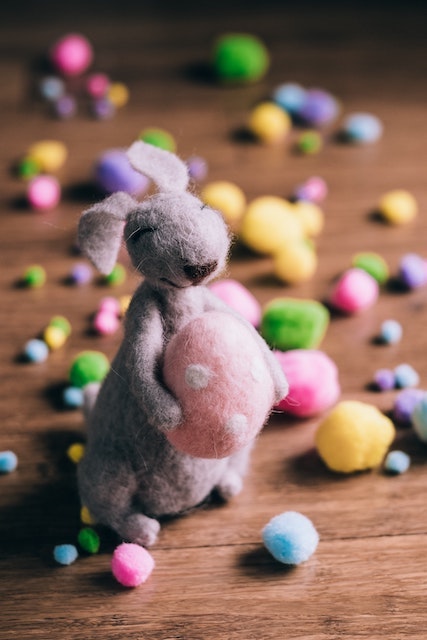
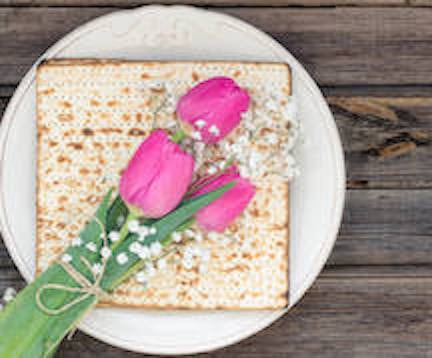
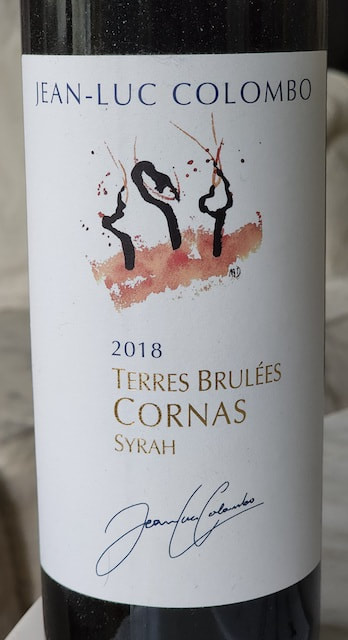
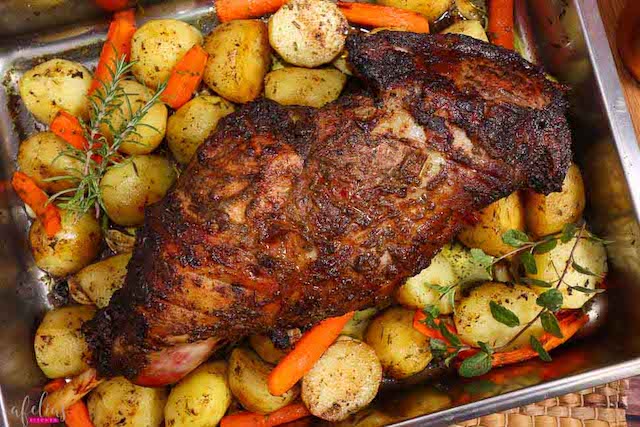
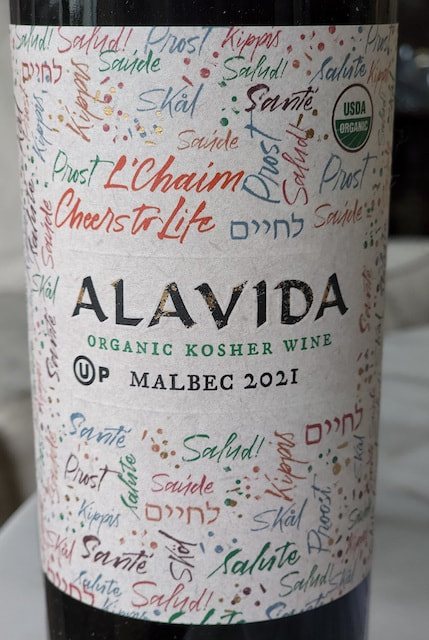
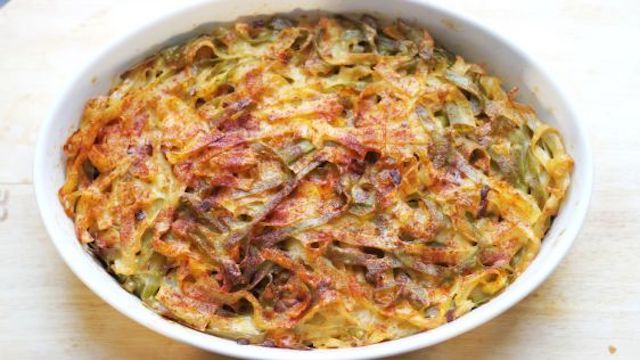
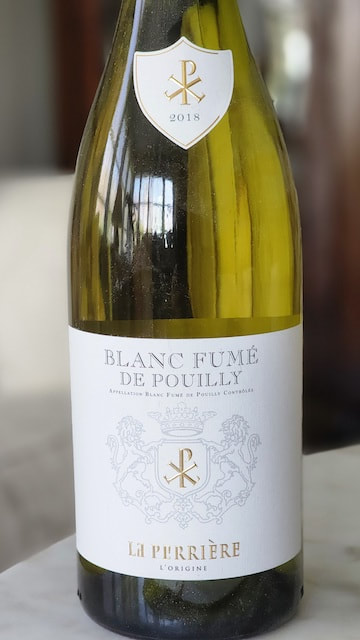
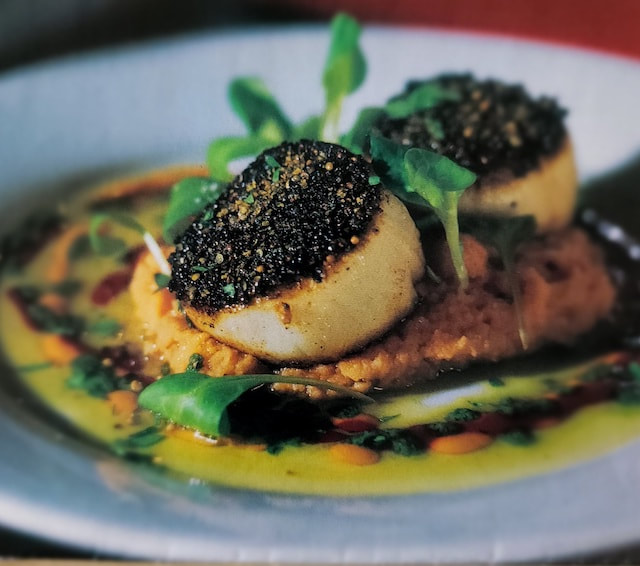

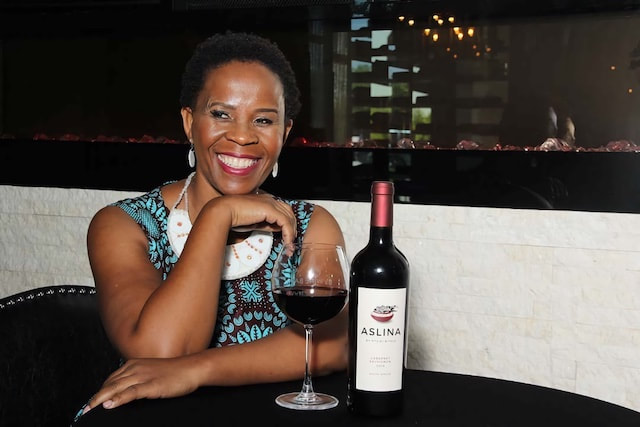
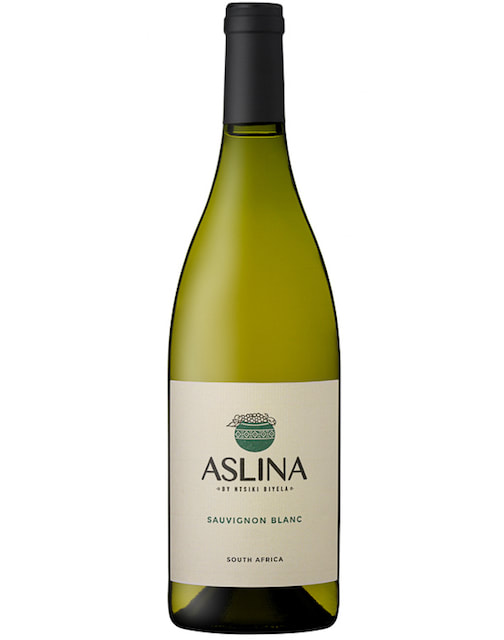
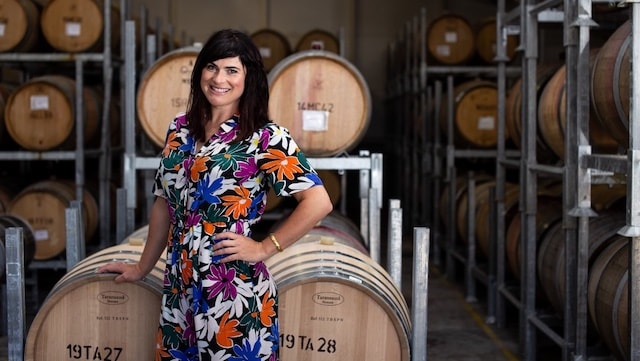
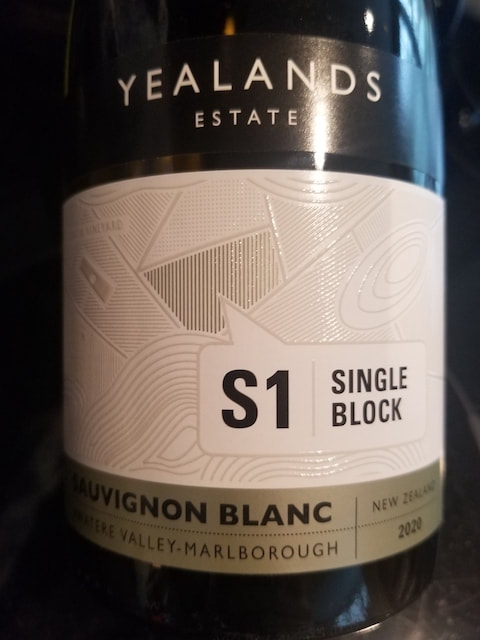
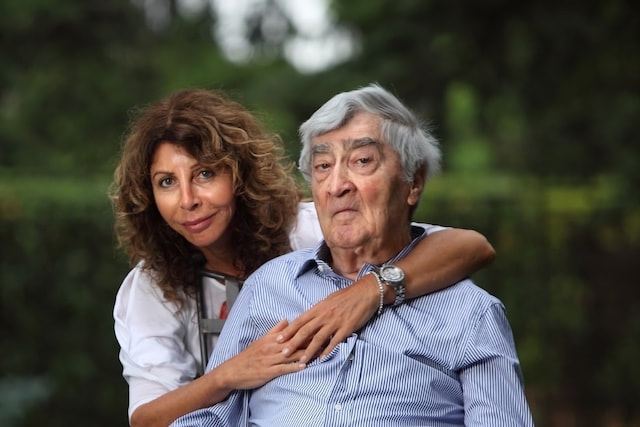
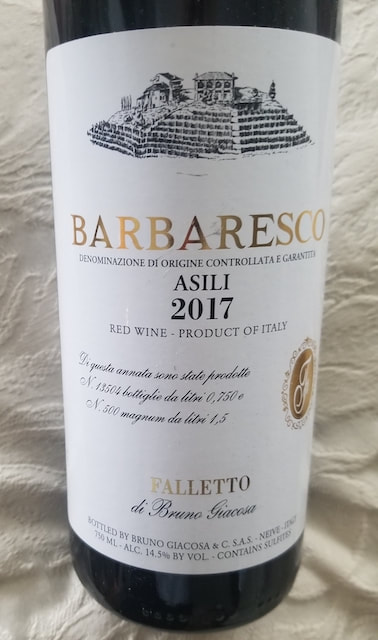
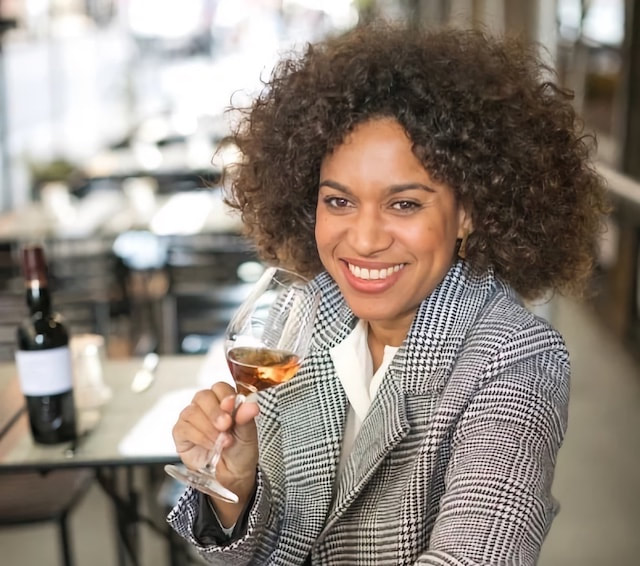
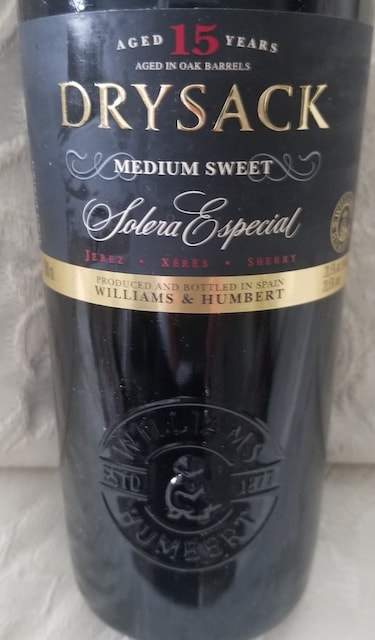
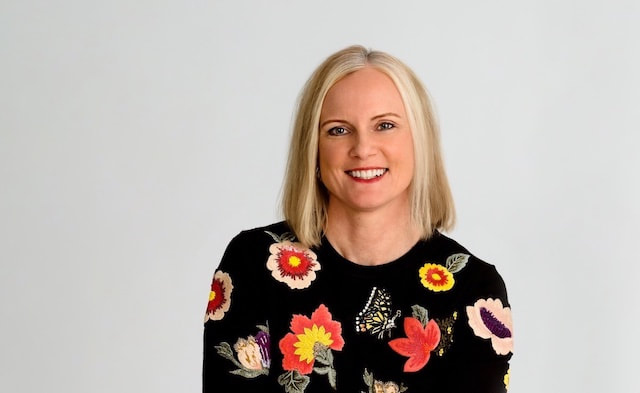
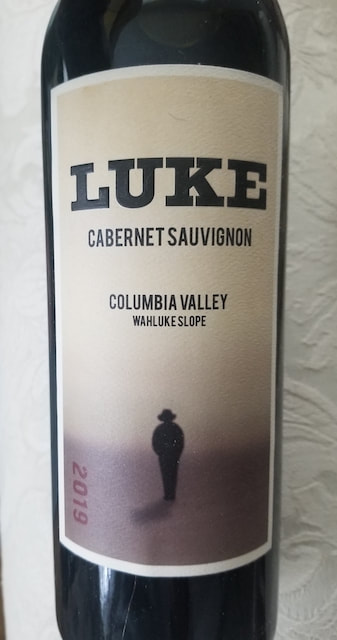
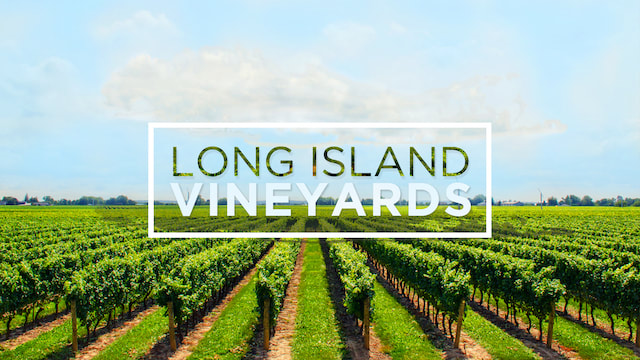
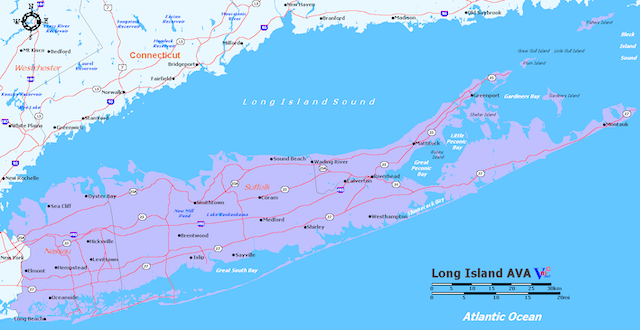
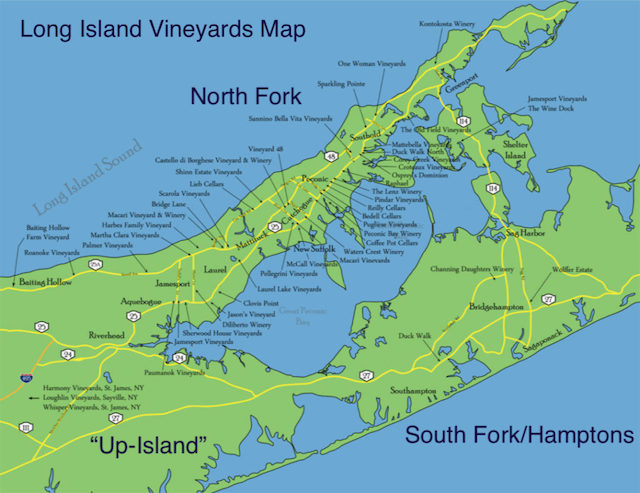
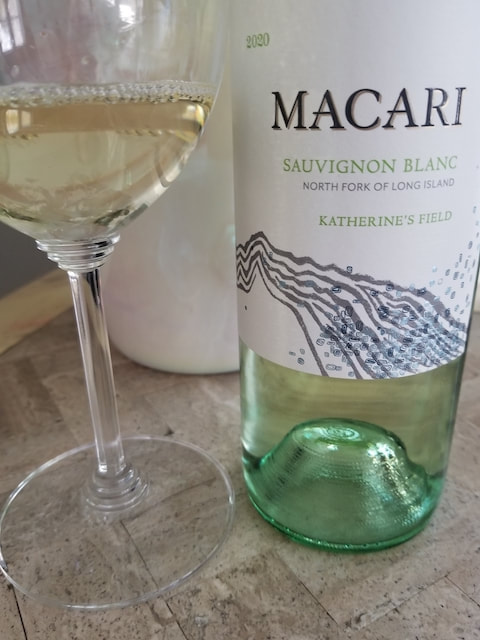
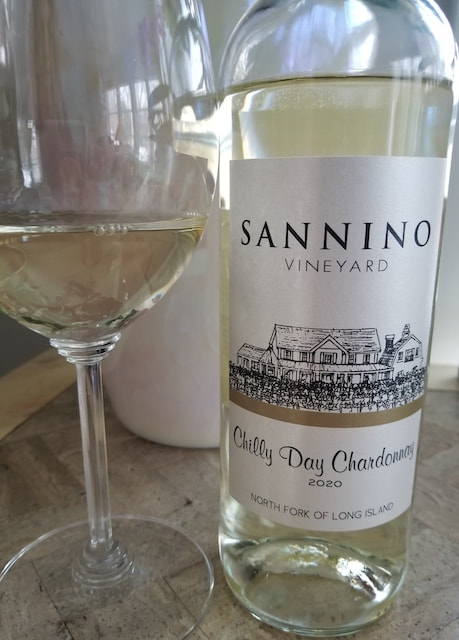
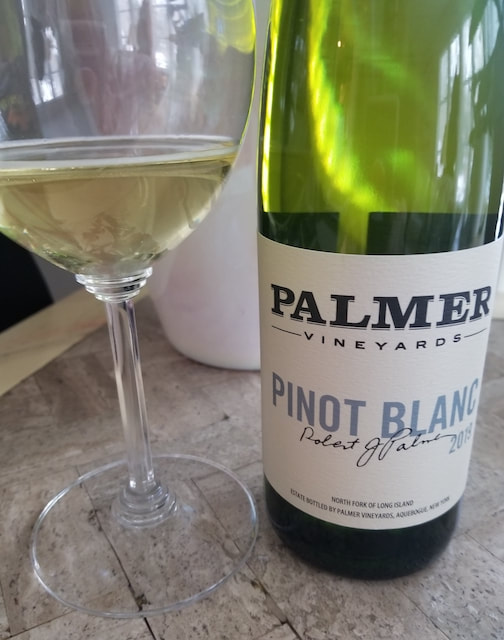
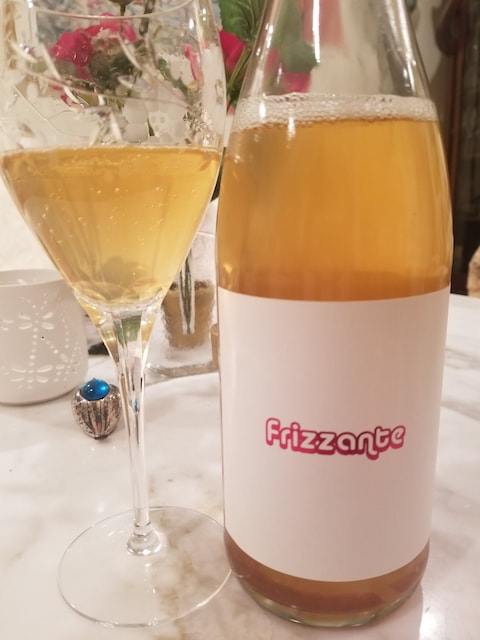
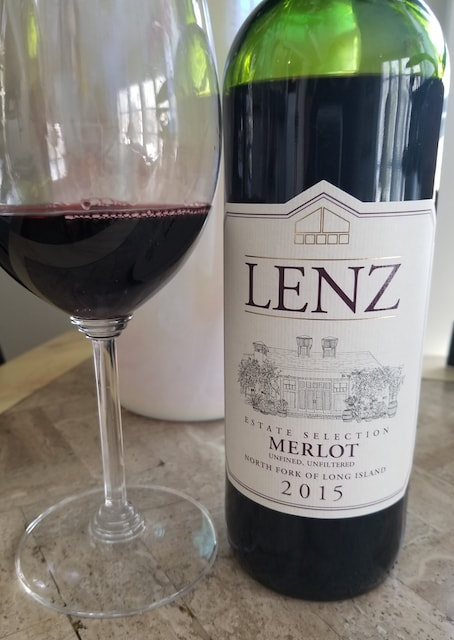
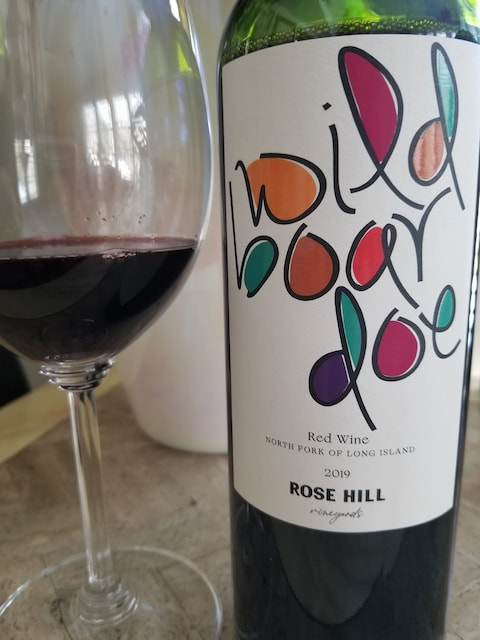
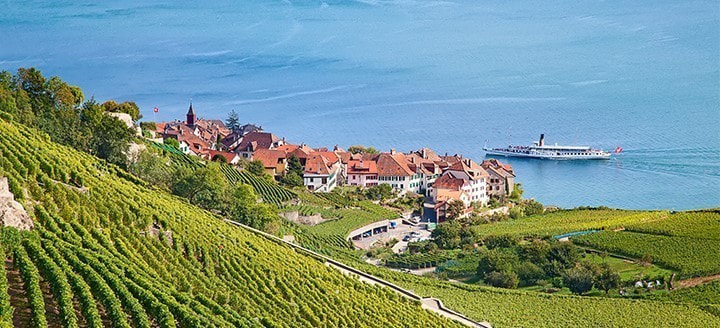
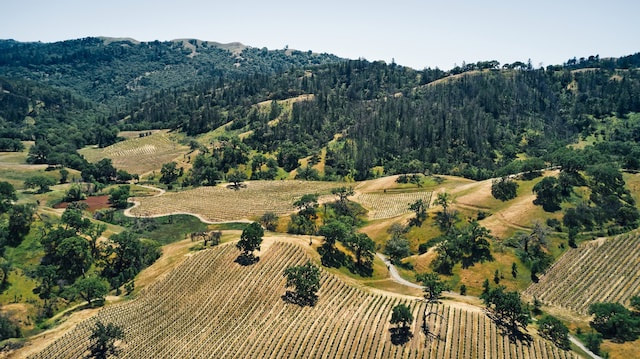
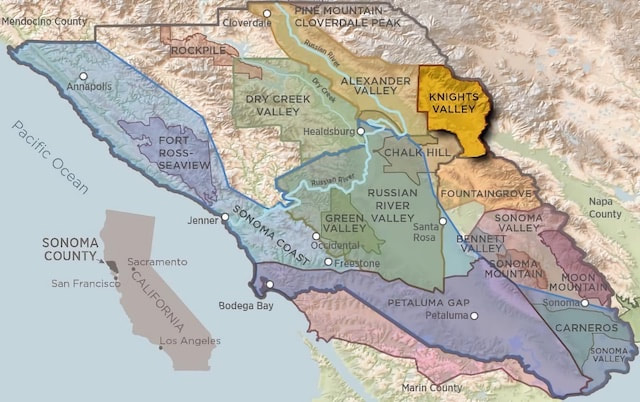
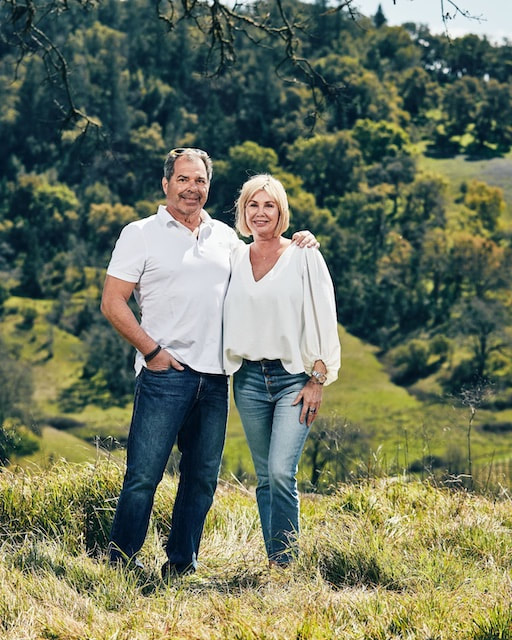
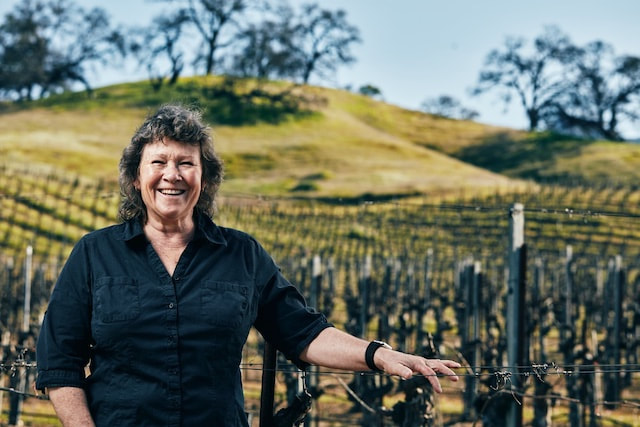
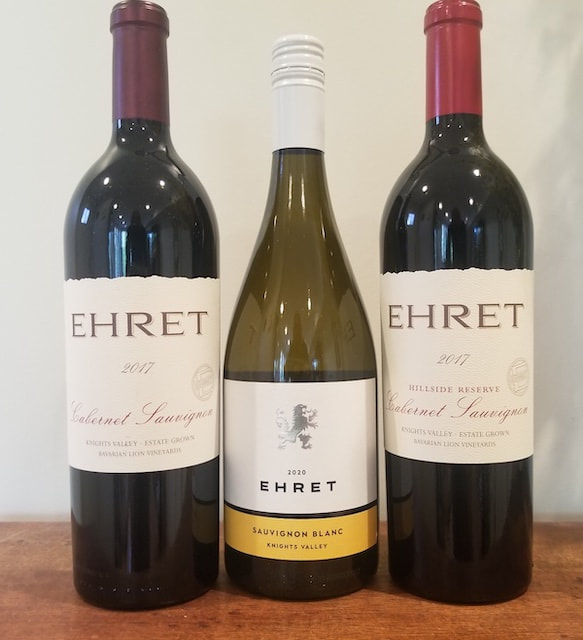
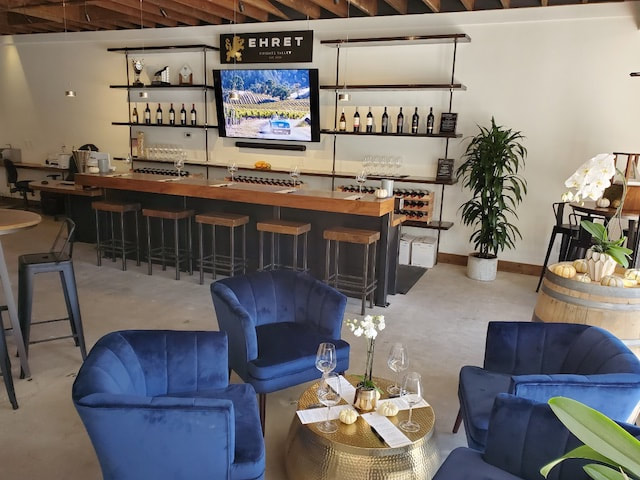
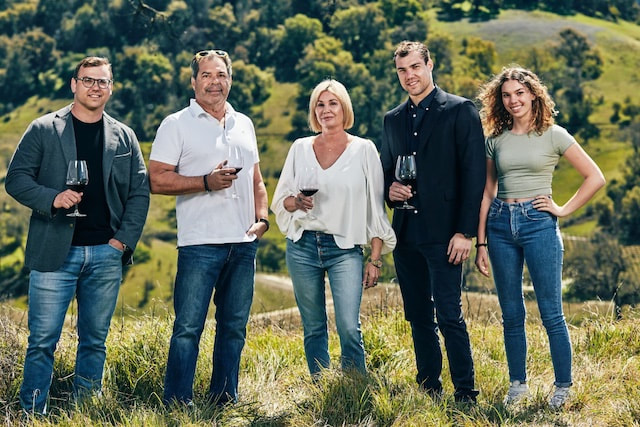
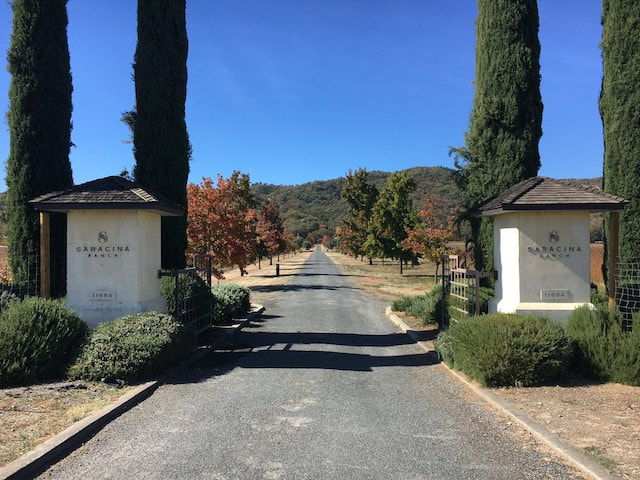
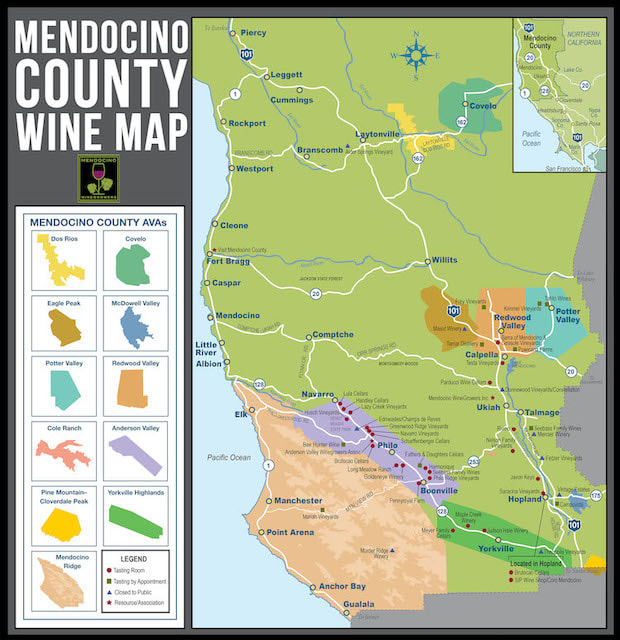
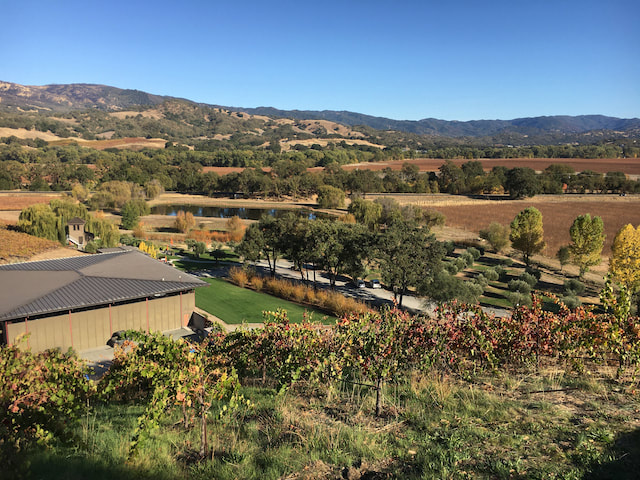
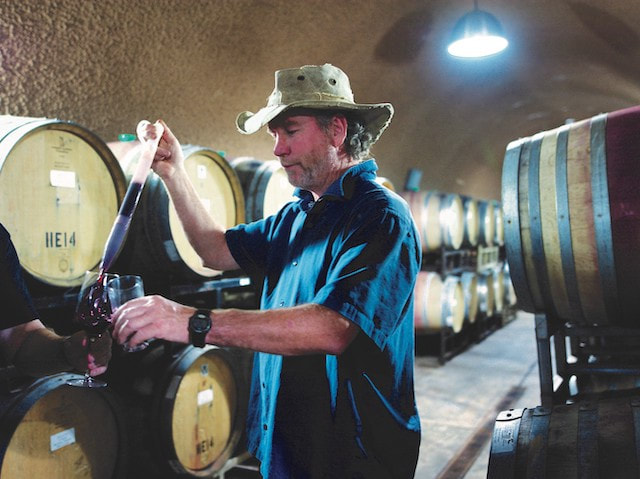
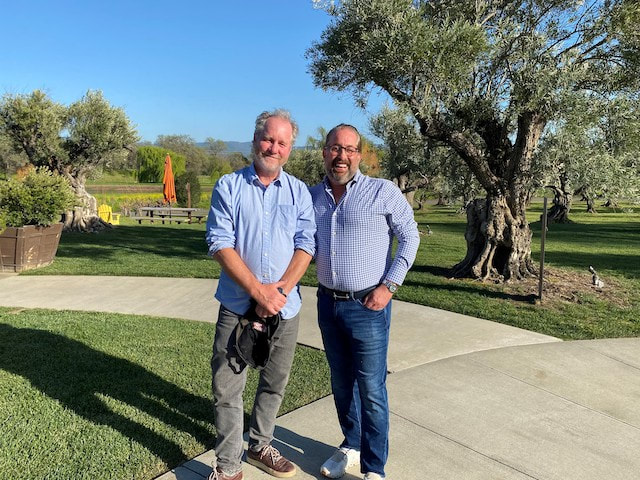
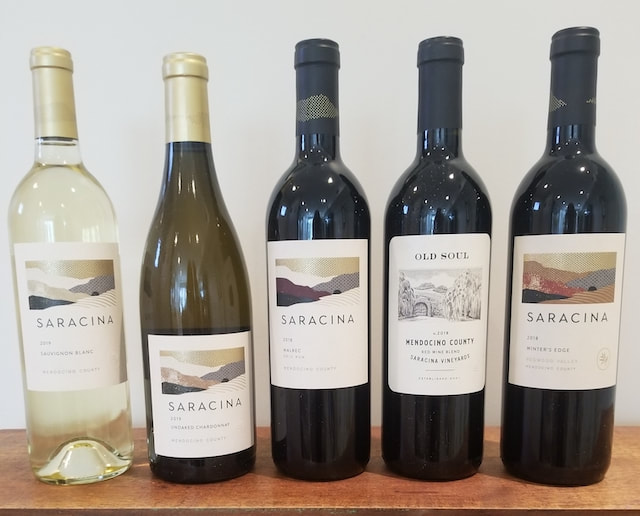
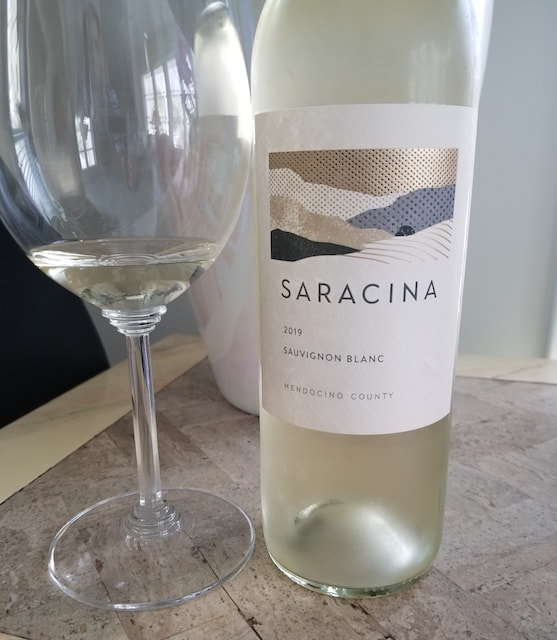
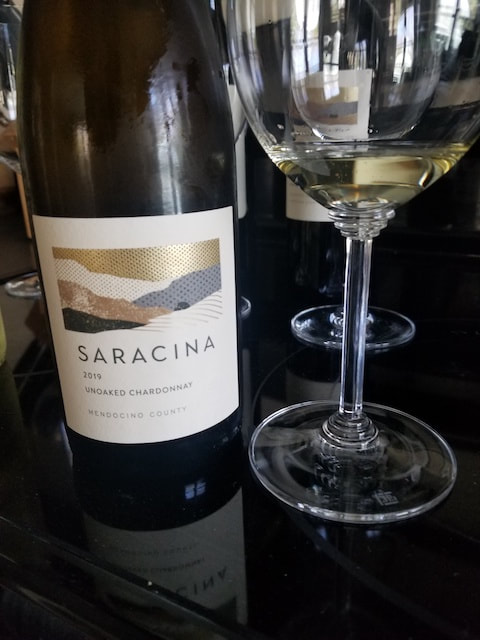
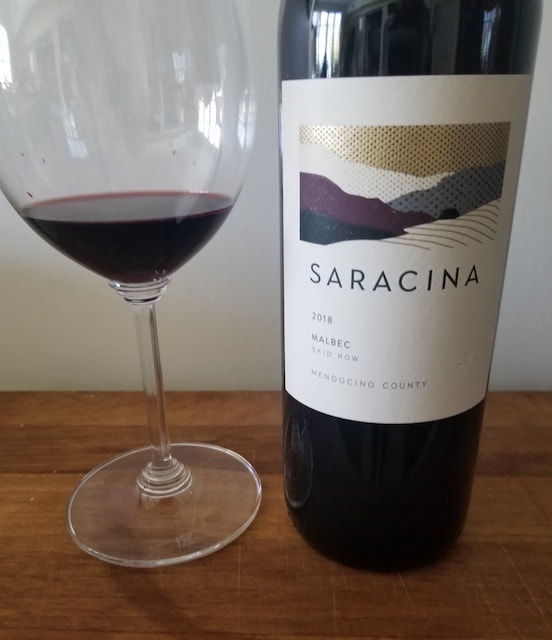
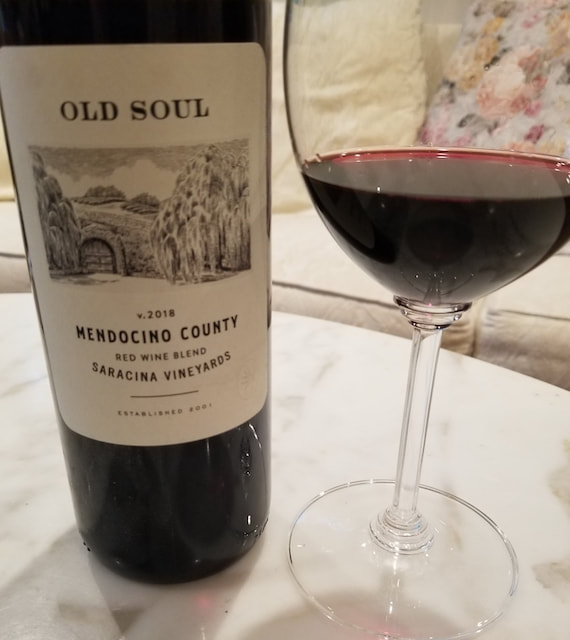
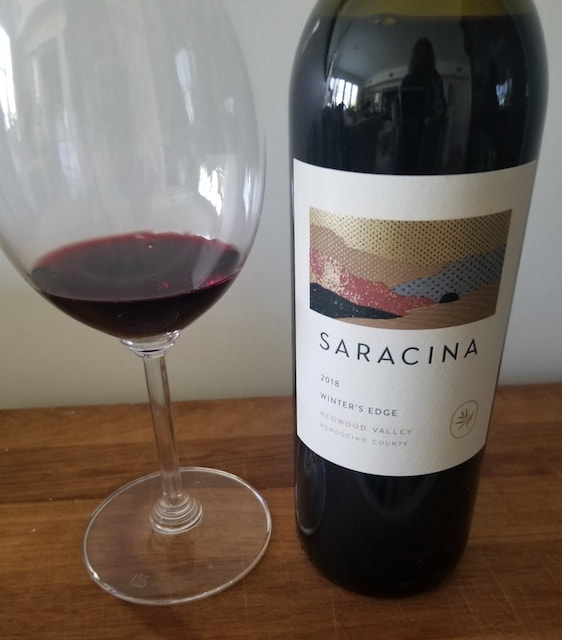
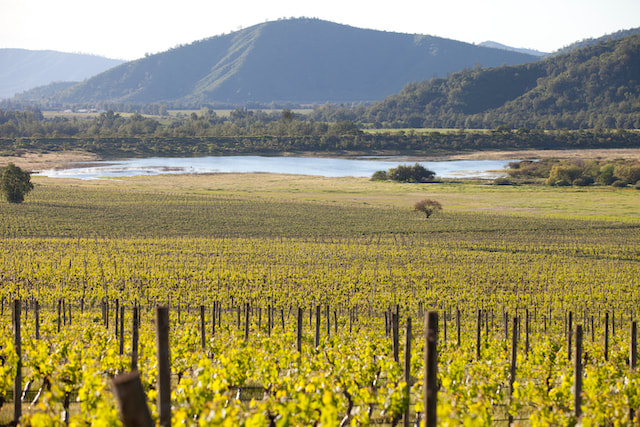
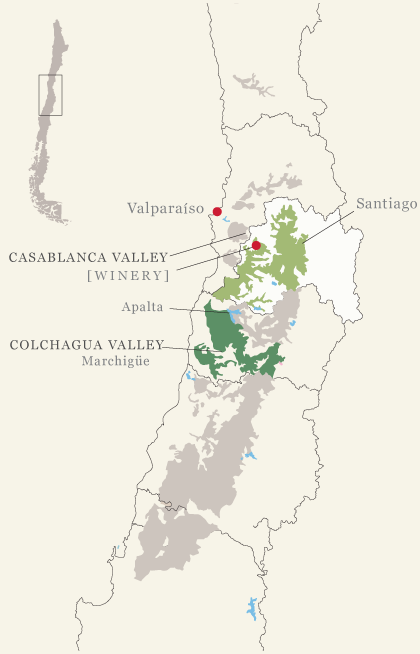
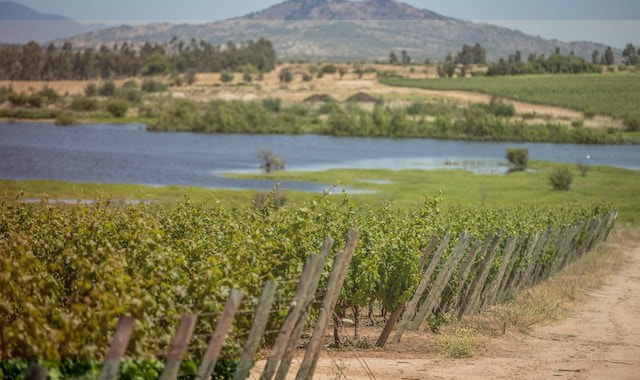
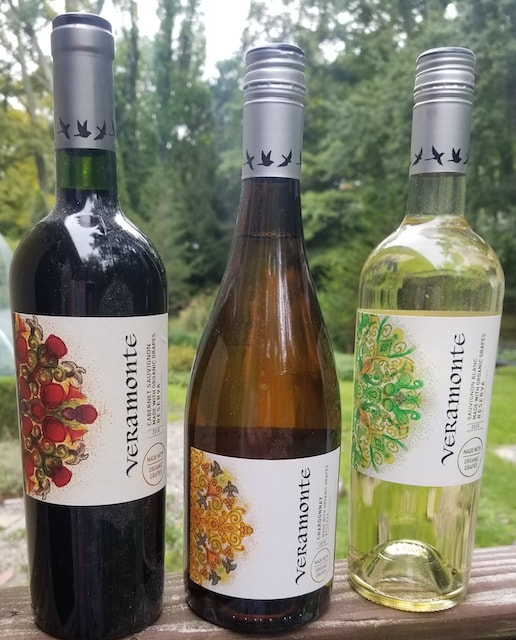
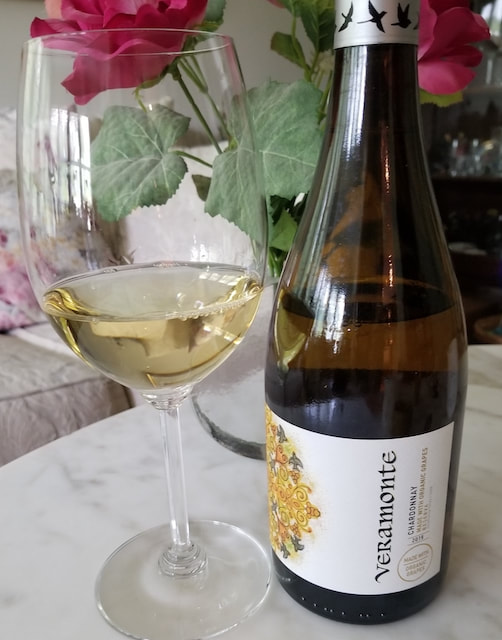
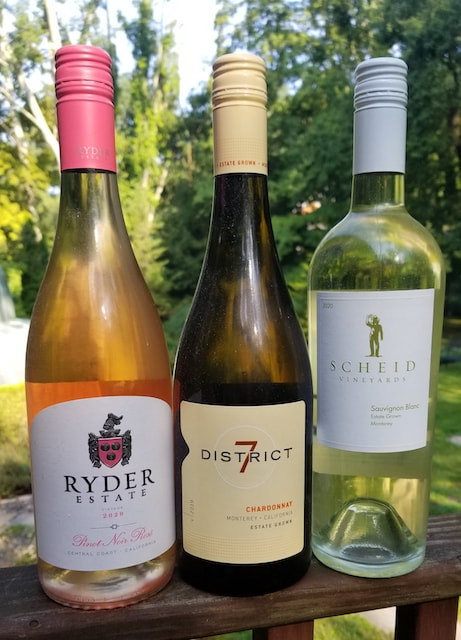
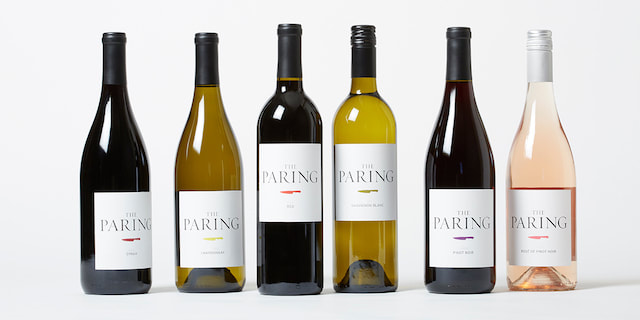
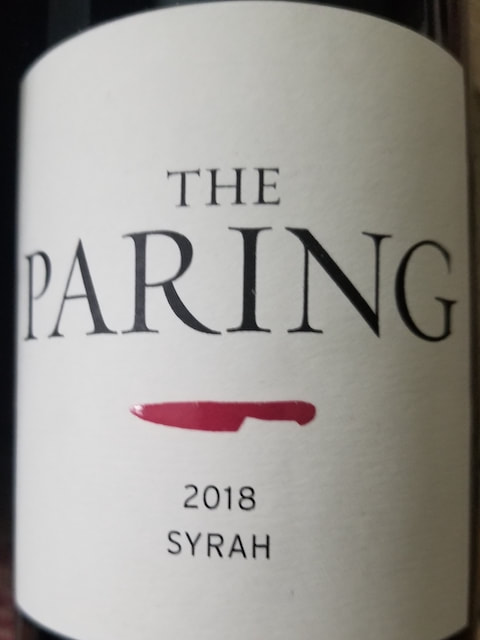
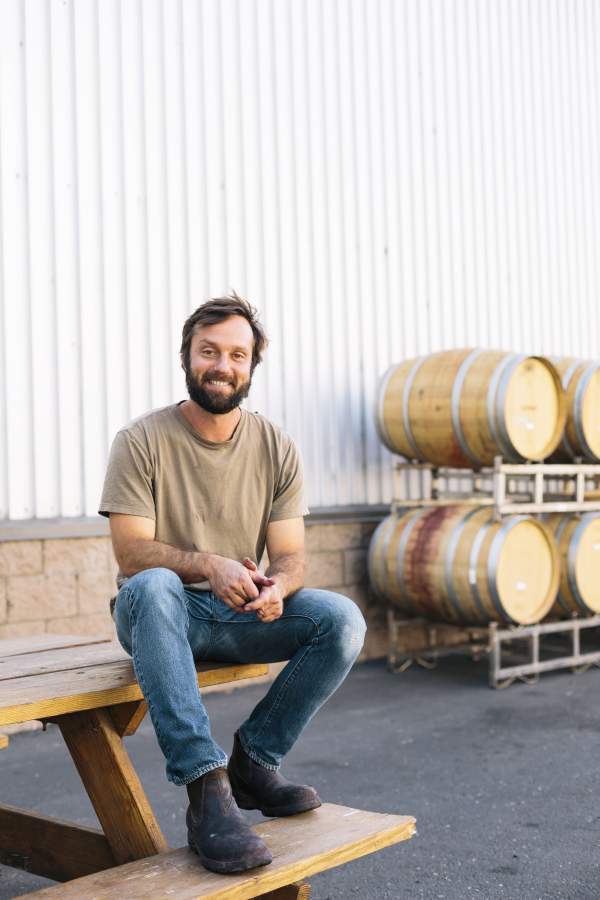
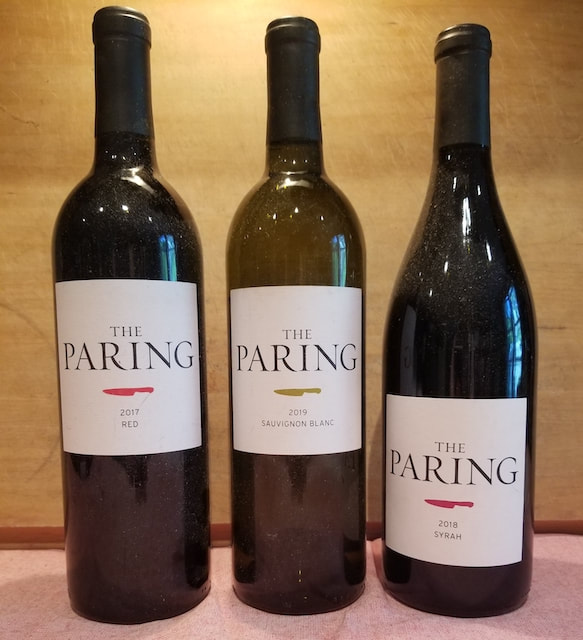
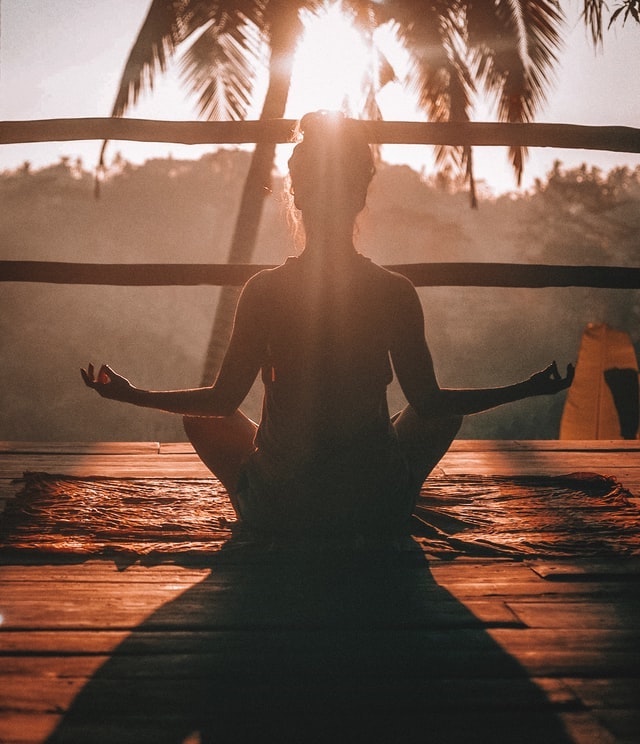
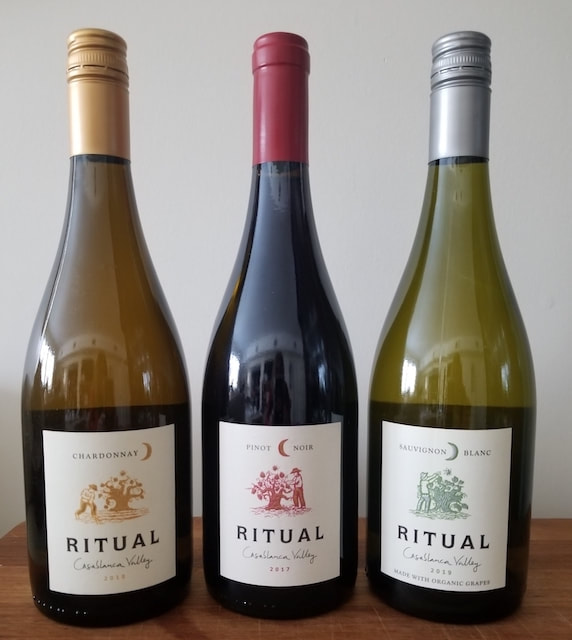
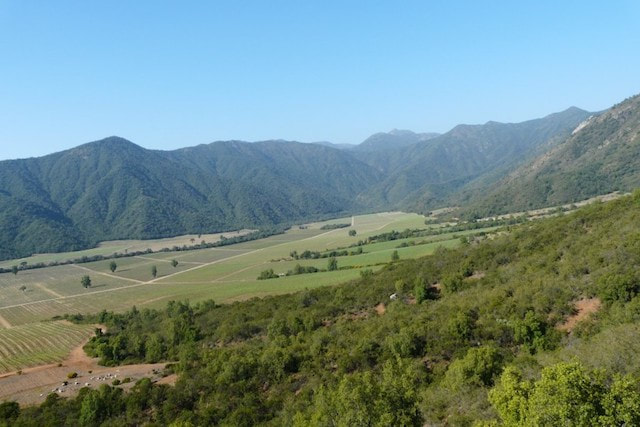
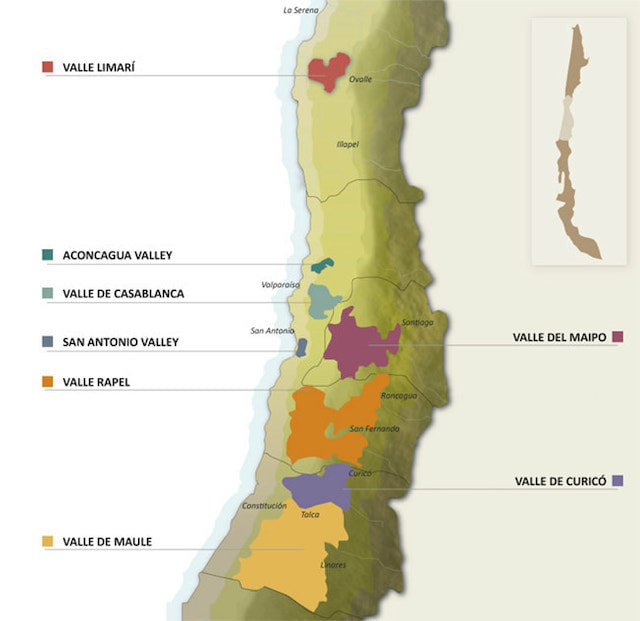
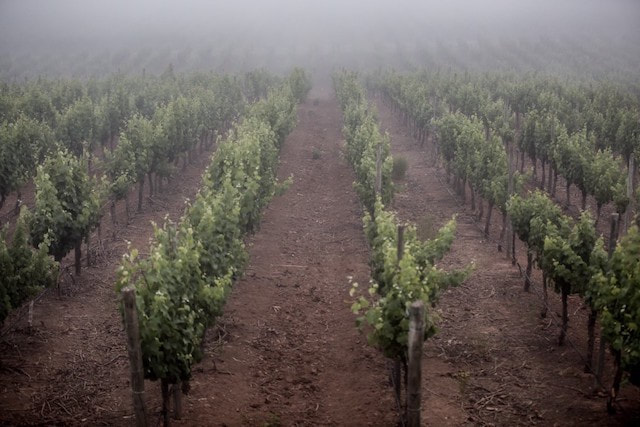
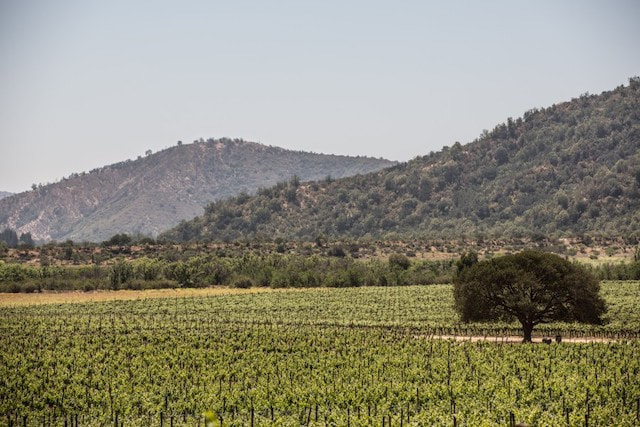
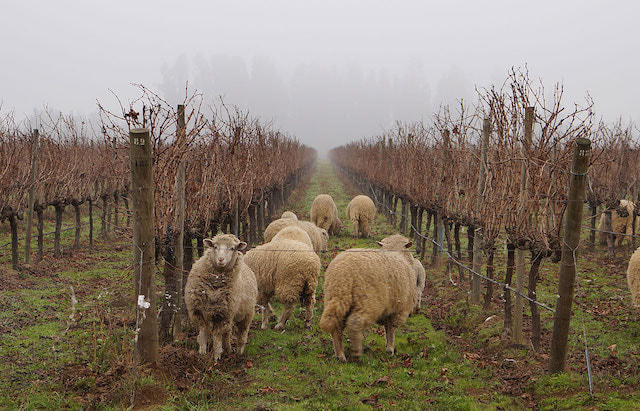
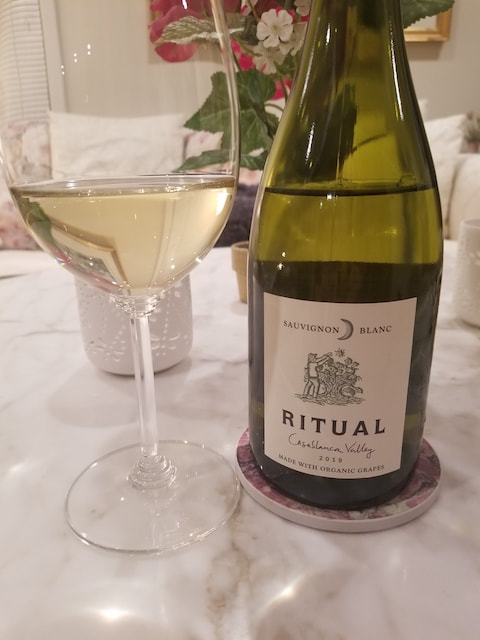
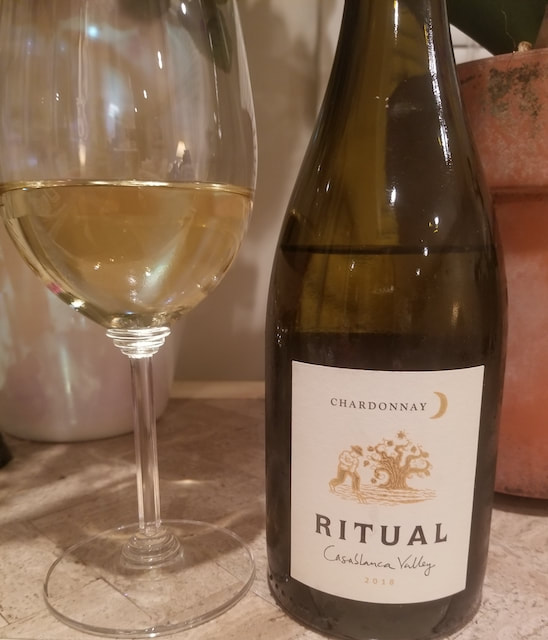
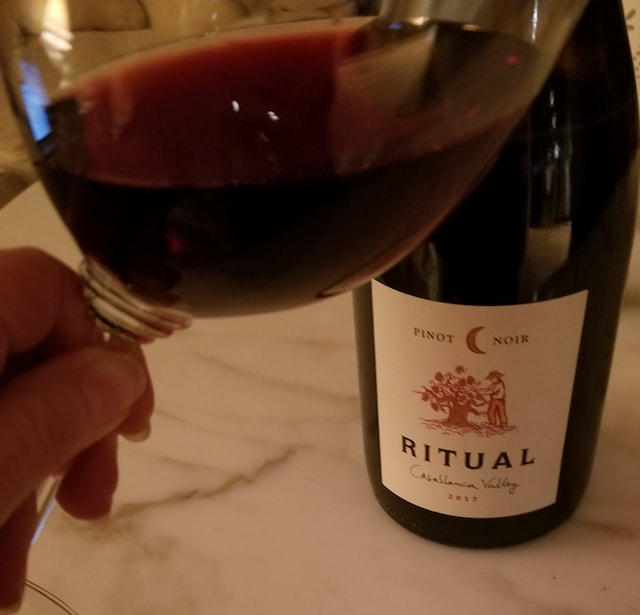
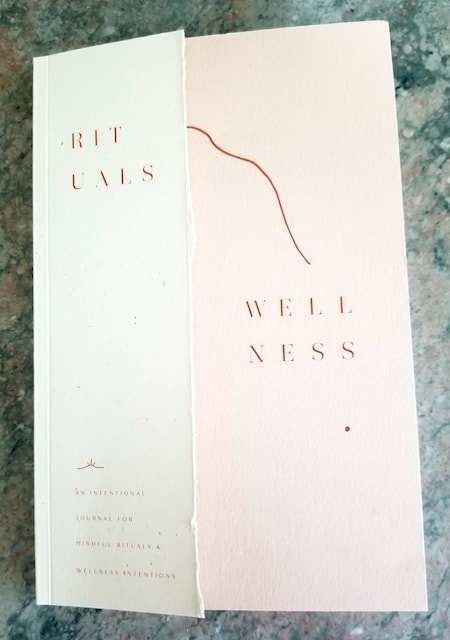
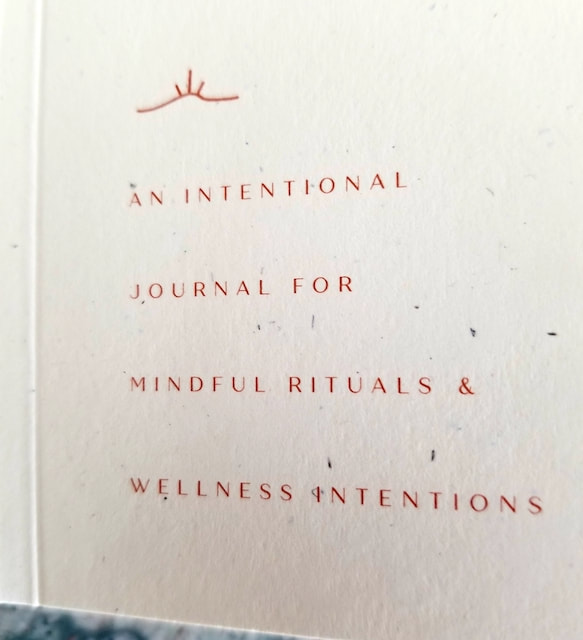
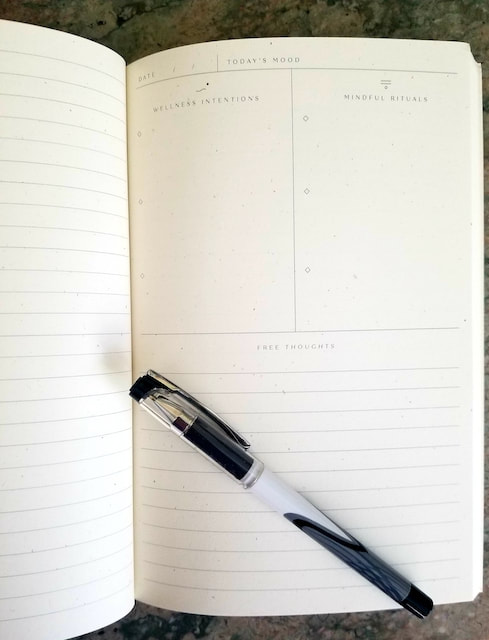
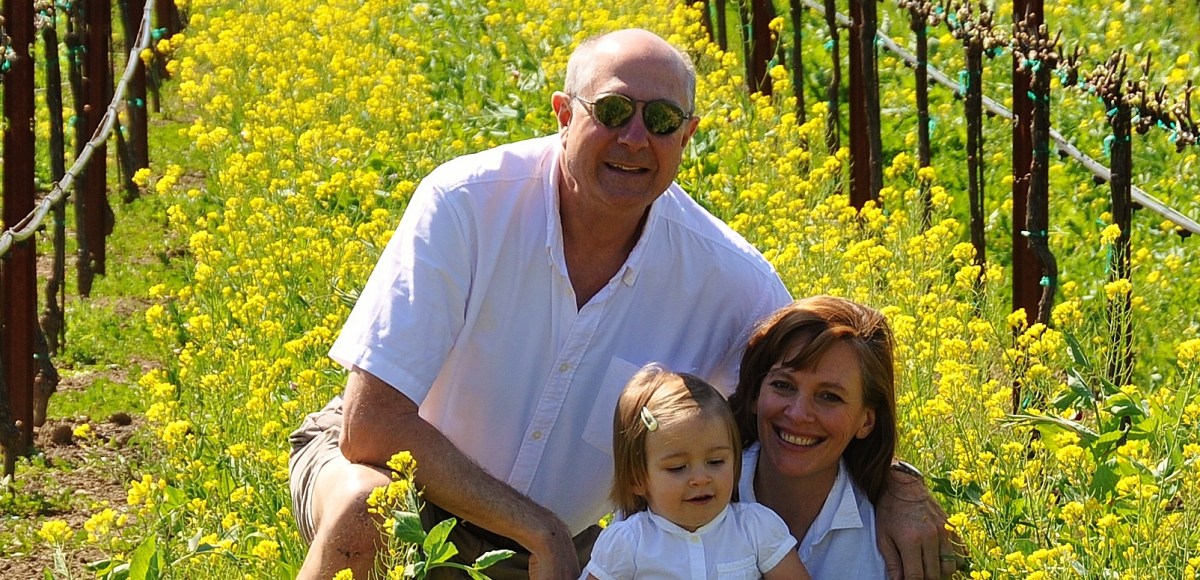
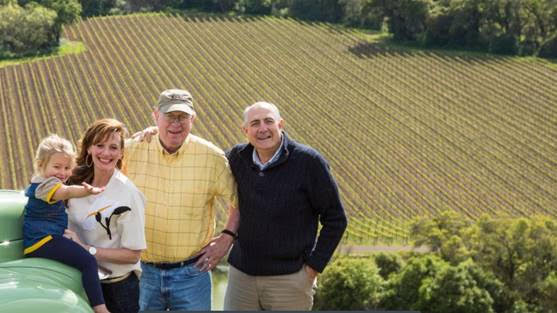
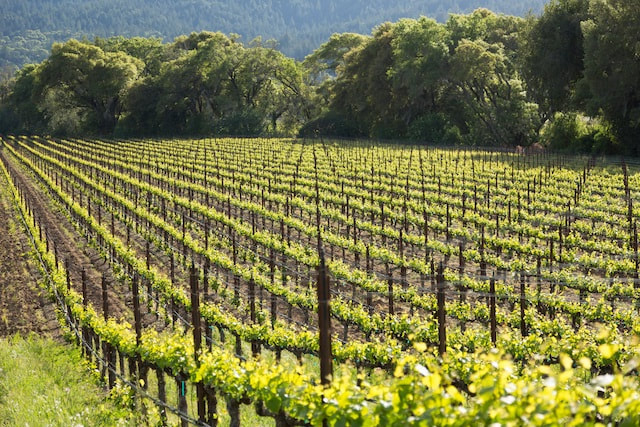
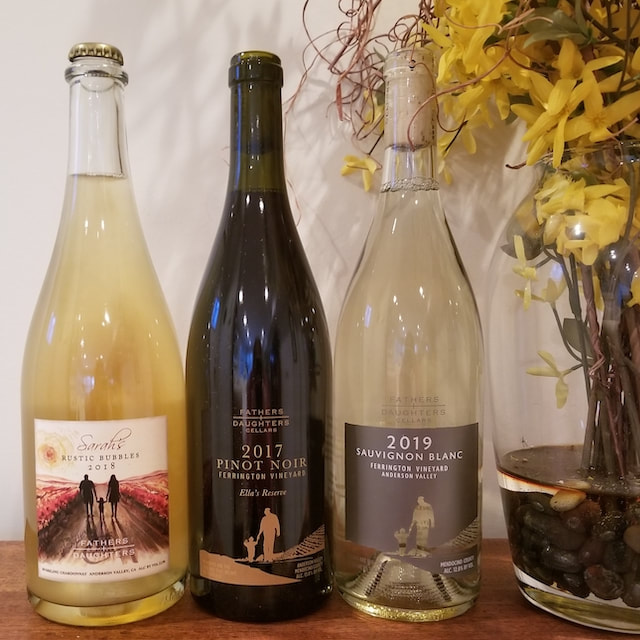
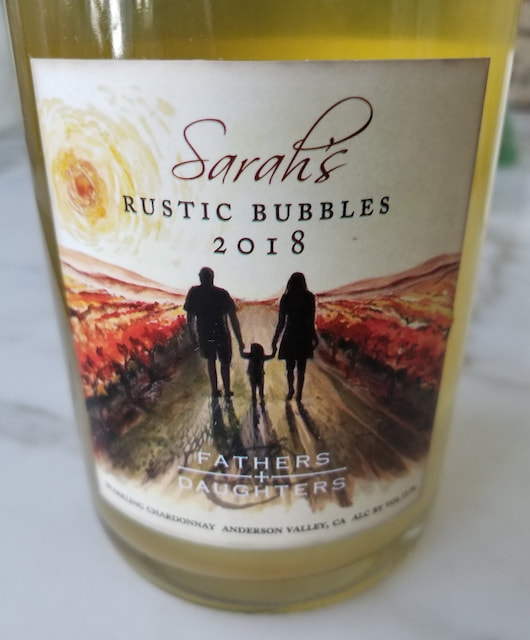
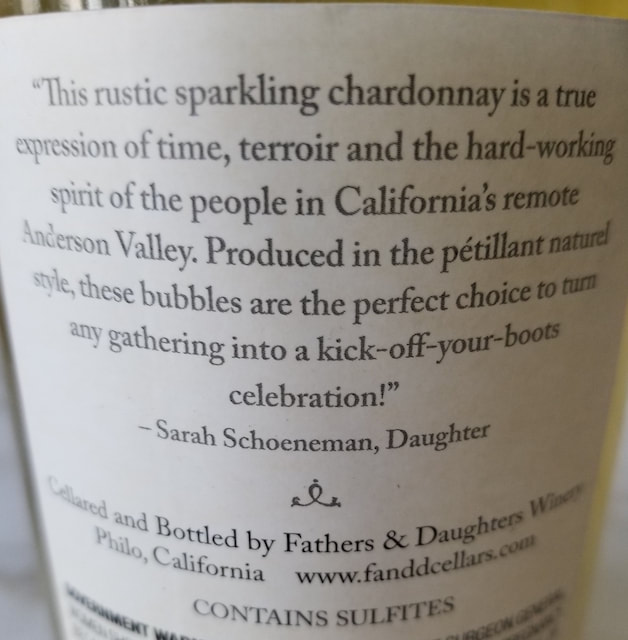
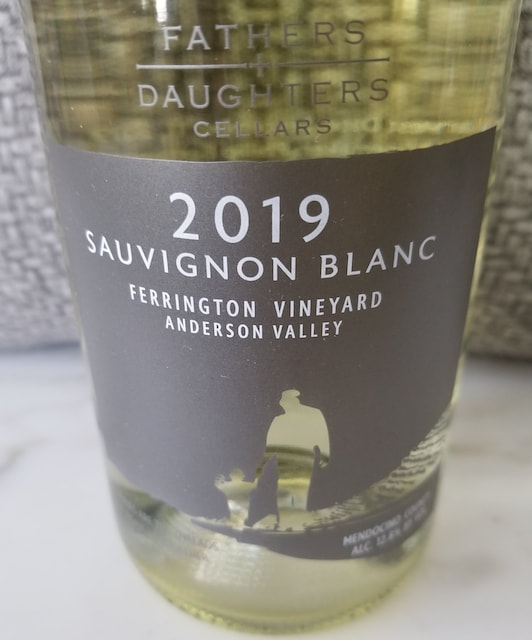
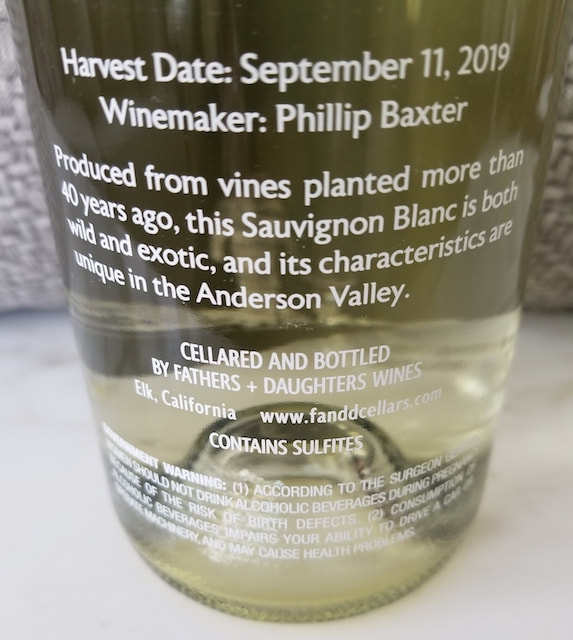
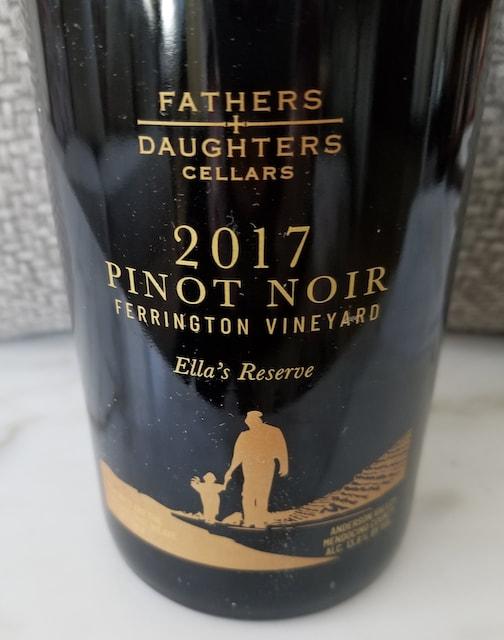
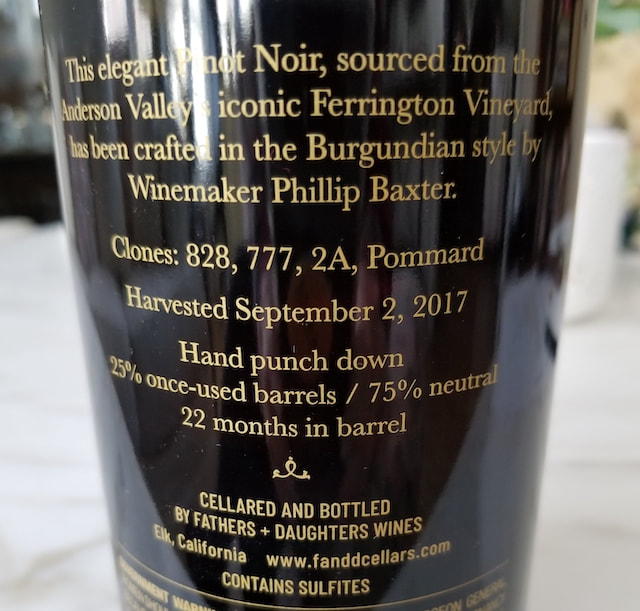
 RSS Feed
RSS Feed